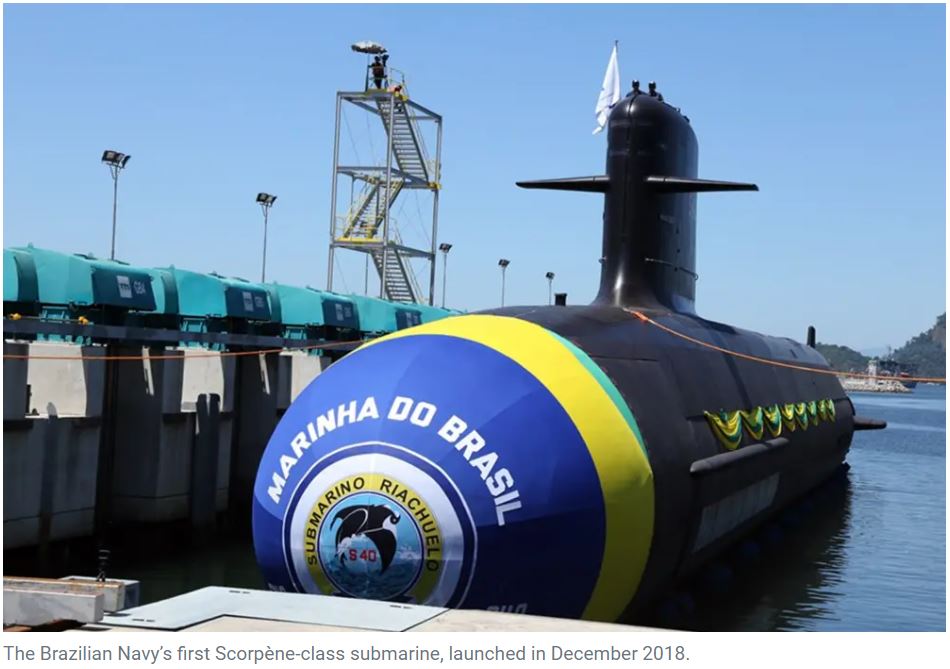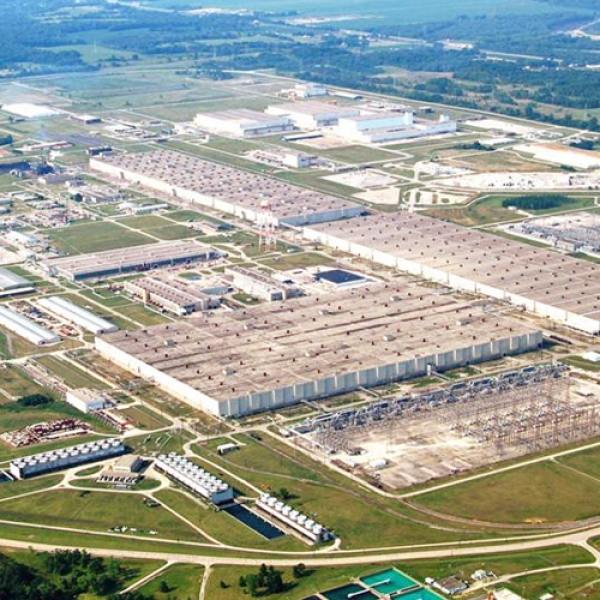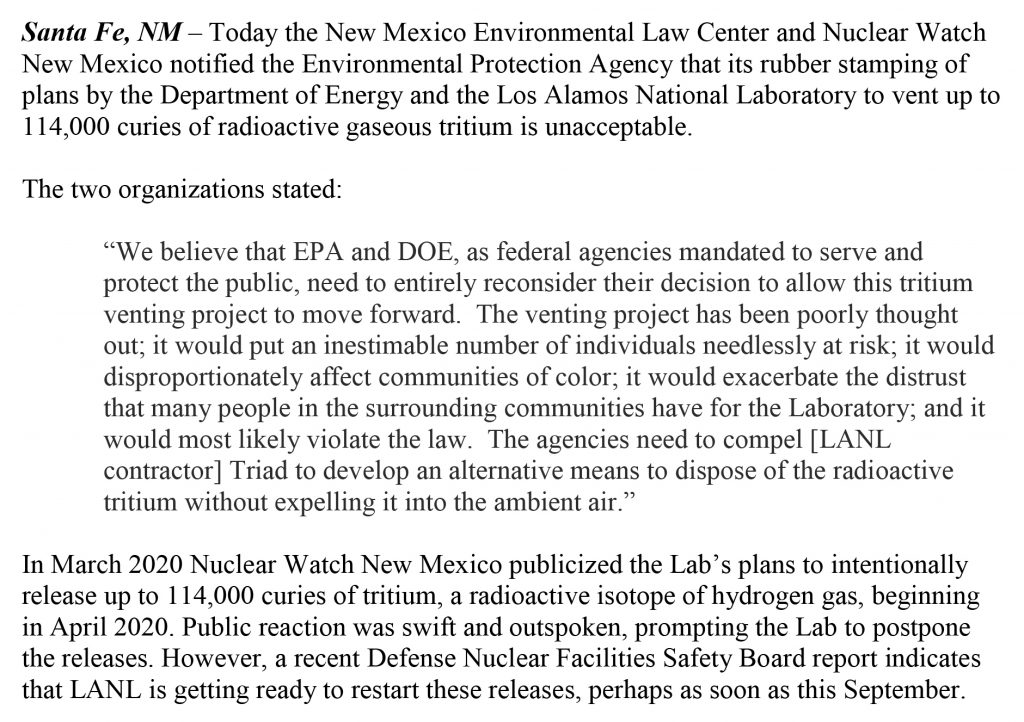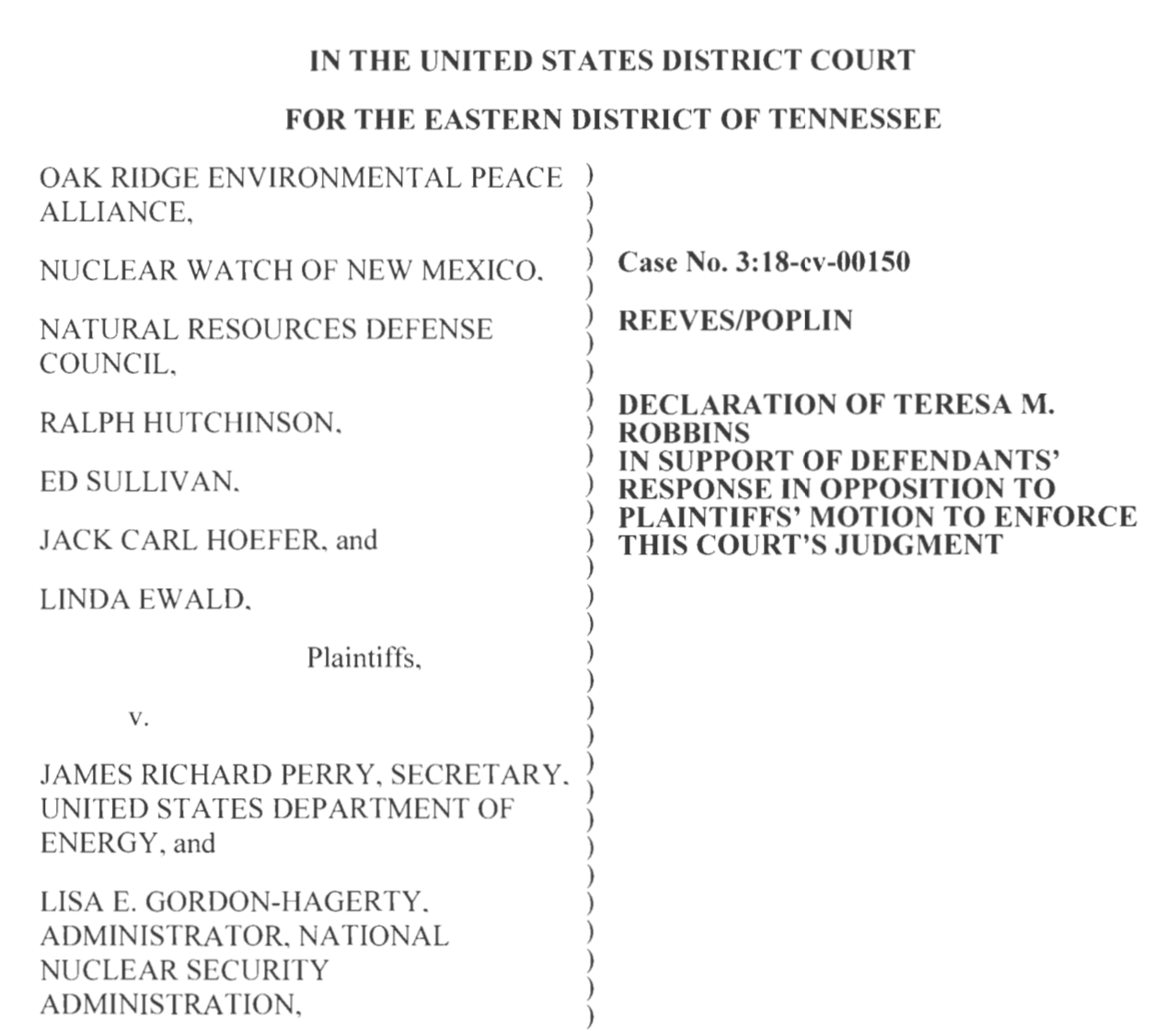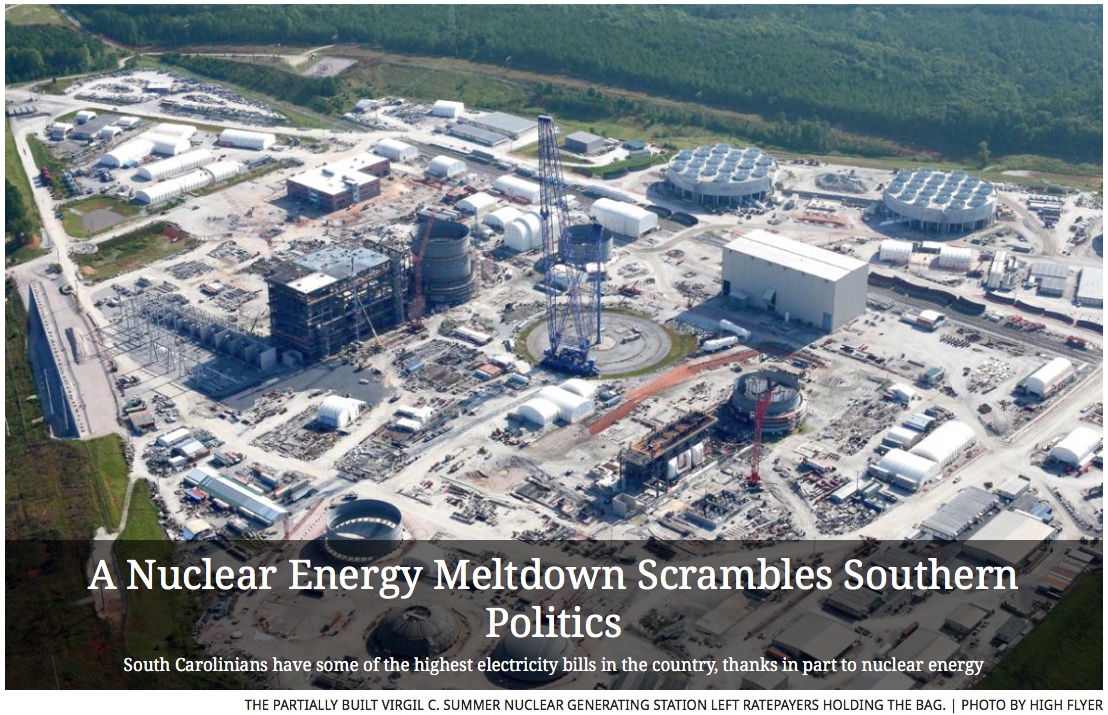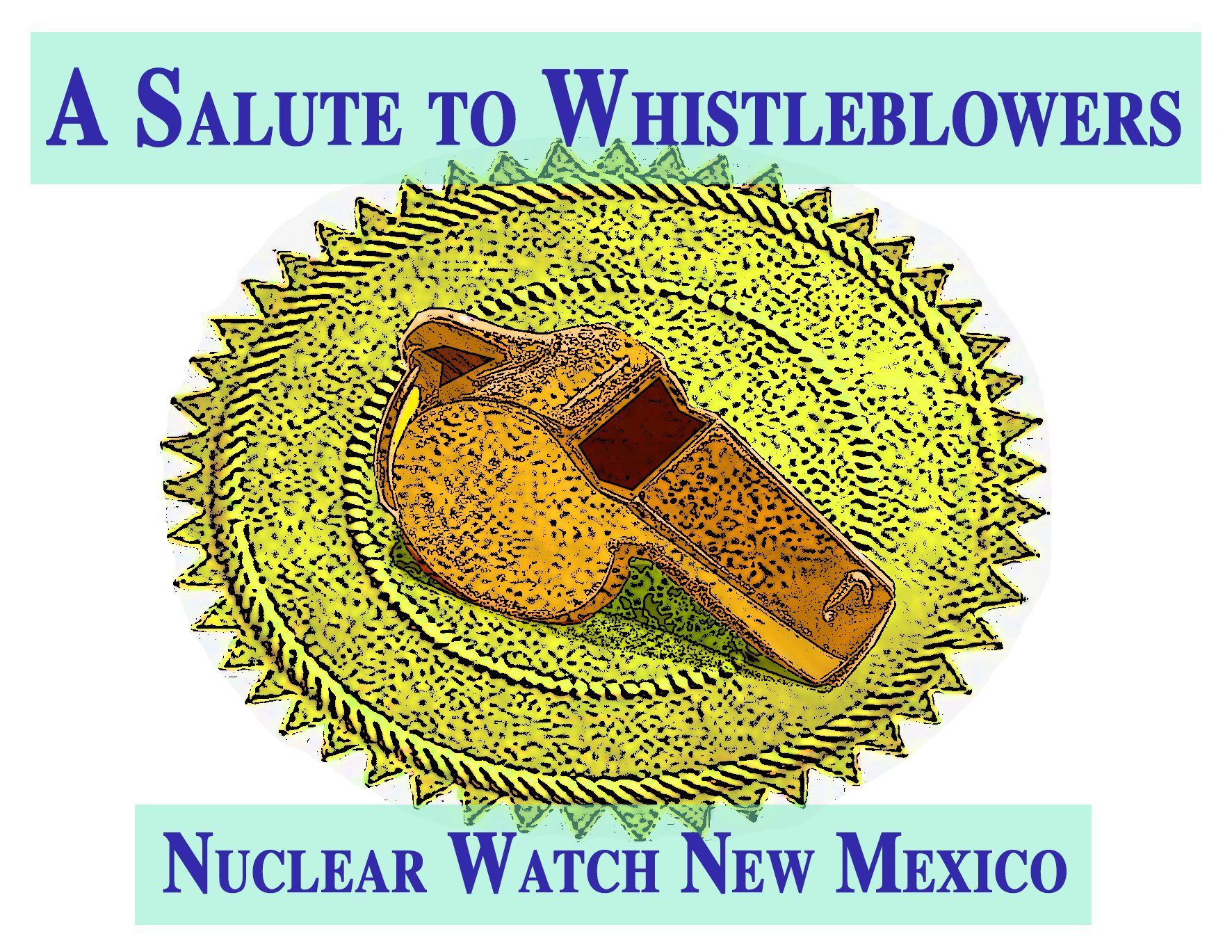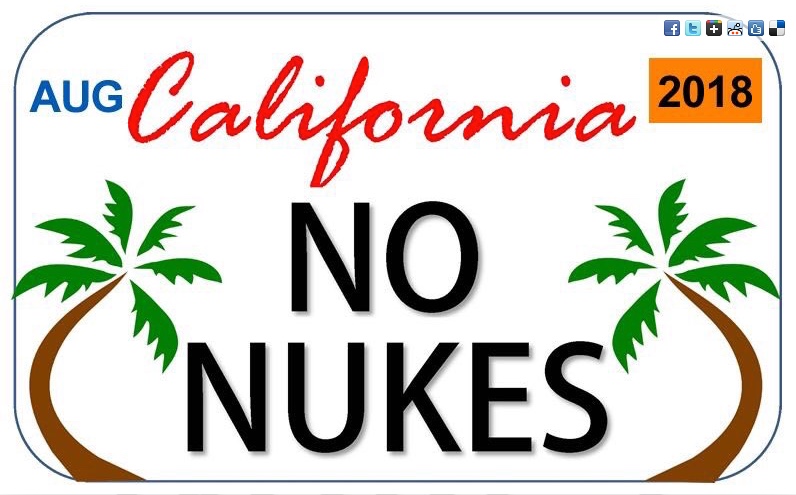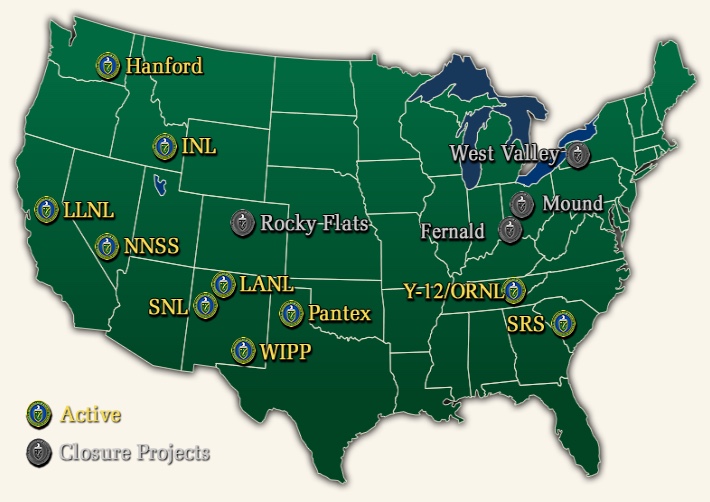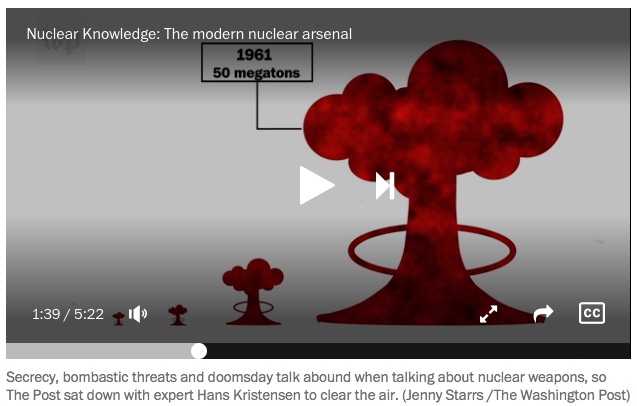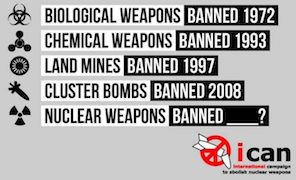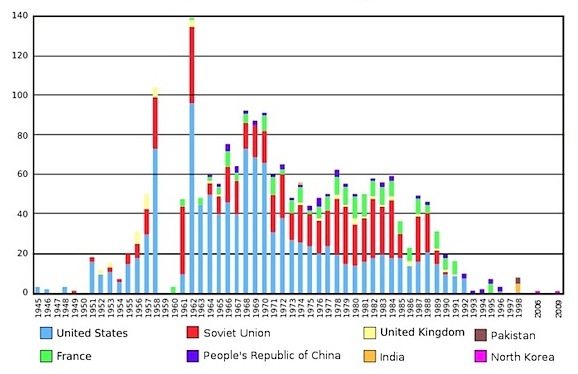2020
Georgia: At crucial crossroads, nuclear plant must be stopped
“In 2001, 30 new reactors were ordered in the U.S., but the so-called “nuclear renaissance” rapidly fizzled leaving only Georgia Power and Vogtle. Meanwhile, renewable energy, in particular solar power, has become abundant and cheap, and solar and wind have been the fastest-growing energy sector for the past several years.”
BY: GLENN CARROLL | augustachronicle.com
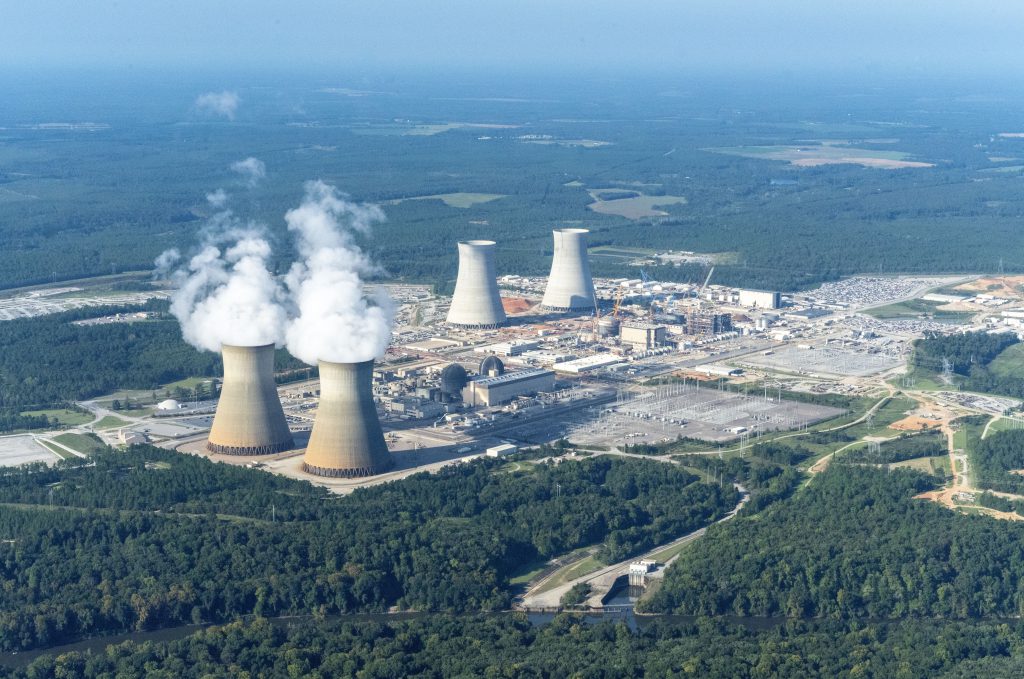
In 1977, a small group of thoughtful, committed Georgians started a grassroots anti-nuclear group to oppose nuclear power, nuclear weapons and radioactive waste and to promote alternative visions for renewable energy and world peace.
At the same time, Georgia Power was resuming construction of Vogtle 1 and 2, having nearly gone bankrupt three years earlier while attempting to build a four-reactor nuclear compound with a budget of $1 billion.
Only 10 weeks after breaking ground, incredibly, Vogtle construction ground to a halt with Georgia Power on the brink of bankruptcy. Georgia Power was saved by two emergency rate hikes thanks to the Georgia Public Service Commission and by selling shares of its hole-in-the-ground Vogtle to most of Georgia’s rural electric cooperatives and municipal power systems.
How to Talk About Nuclear Weapons
Why getting people to care about nuclear policy matters.
BY: ZACK BROWN | nationalinterest.org
It’s a truism of the nuclear field that arms control advocates don’t always win the war of words with their opponents, said Lynn Fahselt, co-founder and executive director of the communications organization ReThink Media.KINGMAN, Ariz. — Danielle Stephens ran her fingers down a long list of her relatives’ names and sighed.
“The first media audit we did showed that, on the opinion pages, we were being beat three to one,” she said in an interview with the podcast, Press The Button. “For every one argument we made for arms control and disarmament, our opposition was making two and calling ours naive.”
At first glance, this editorial record might seem like a minor datapoint in the grand scheme of nuclear politics. But in a fast-moving democracy whose attention span is only as long as the shortest news cycle, wins in the court of public opinion—even small ones—can affect government policy in real ways.
UPDATED: DOE INVOKED TECHNICAL STANDARDS
The following Directive has been added to the DOE Directives Portal:
The Directives Review Board (DRB) has conducted a review of DOE Orders that invoke Technical Standards. The DRB determined which Technical Standards should be invoked; developed boilerplate language for the invoking of Technical Standards; and updated affected Orders for clarity and consistency.
The following Orders were updated to clarify which Technical Standards are invoked:
- DOE O 458.1 Chg 4 (LtdChg), Radiation Protection of the Public and the Environment
-
- To establish requirements to protect the public and the environment against undue risk from radiation associated with radiological activities conducted under the control of the Department of Energy (DOE) pursuant to the Atomic Energy Act of 1954, as amended (AEA). Supersedes DOE O 458.1 Chg 3 (AdminChg), dated 1-15-2013.
-
Take Action! LANL Plans to Release Radioactive Tritium
CONCERNED CITIZENS FOR NUCLEAR SAFETY | nuclearactive.org
On Wednesday morning, the public was notified by Los Alamos National Laboratory (LANL) that releases of radioactive tritium could begin as early as Friday, September 11th. LANL tried to launch this plan last March. Communities organized against it and the project was halted. 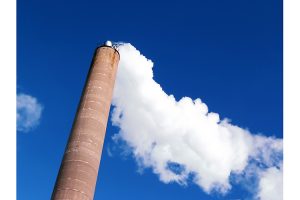
https://tewawomenunited.org/2020/09/action-alert-stop-radioactive-releases-at-los-alamos-national-laboratory , http://nuclearactive.org/lanl-plans-to-release-twice-the-amount-of-tritium-allowed/ , and http://nuclearactive.org/lanl-postpones-tritium-releases-due-to-global-pandemic/
If you were not signed up to receive emails from LANL’s Electronic Public Reading Room, you would not have received Wednesday morning’s notice. https://eprr.lanl.gov/ [The subscribe button is on the lower left.] The notice provided links to letters LANL submitted to the Environmental Protection Agency and the New Mexico Environment Department requesting permission to proceed with venting the four tritium containers. The containers hold lead and an estimated 114,000 curies of radioactive tritium.
The tritium is in the form of tritiated water, which harms when it is inhaled or ingested. https://ieer.org/article/energy-security/healthy-start-tritium-issue-38/
Now is the time of harvest. People are outside and breathing deeply while they bring in the harvest. The risk for breathing in particulates, pollutants, tritiated water, among other contaminants, has increased due to the COVID-19 global pandemic. Smoke and ash from the Medio wildfire significantly contributed to poor air quality for weeks, which was finally knocked down on Tuesday night when the rain and snow arrived. The link between increased COVID-19 death rates and air pollution are well known.
Environment Secretary Says LANL Tritium Venting Project Puts New Mexico In Bad Situation
“Under the Triad contract, one of their performance requirements for this fiscal year is to vent five more containers that are larger, that contain more tritium, by Sept. 30. So we feel like they’re trying to get permission to vent these four containers on Friday so that they can vent the other five before the end of the fiscal year so that they can get their bonus…This is a pattern in practice by DOE – to do things in order to get the bonuses for their contractors.” – Joni Arends, executive director of Concerned Citizens for Nuclear Safety
BY: MAIRE O’NEILL | losalamosreporter.com
The planned venting of tritium from four Flanged Tritium Waste Containers at Los Alamos National Laboratory on or after Friday, Sept. 11 has placed the state of New Mexico in a bad situation, New Mexico Environment Department (NMED) Sec. James Kenney told the Legislature’s Committee on Radioactive and Hazardous Materials Wednesday.
The Los Alamos Reporter previously published two stories on the venting project:
https://losalamosreporter.com/2020/03/23/lanl-to-conduct-tritium-venting-operation-beginning-in-april/
https://losalamosreporter.com/2020/04/03/lanl-tritium-ventilation-project-on-hold-due-to-covid-19-scope-of-work-amended-to-include-possible-secondary-venting/
“These containers have been neglected for so long by both DOE and the Environment Department. We’re in this position, which is do they vent those tritium drums, collect that emission to prevent it from being in the air and then move those drums offsite, or do we run the risk of leaving those drums onsite knowing that they are pressurized and could rupture meaning an uncontrolled amount of tritium would go out,” Kenney said. “I do not like the position our Department is in. I think this goes towards the fact that DOE did not do something sooner and it goes to the fact that our Department has been so underfunded that we don’t have the staff to go and hold people accountable to do those things in a timely manner, so we are in a very bad position.”
Big audience for protest of race training
Petersen says he tried to point out to lab officials the “blatant lies and deep immorality” in the presentations. He says he tried to teach his own classes to counter the training Sandia offered but was denied.
By: RYAN BOETEL / JOURNAL STAFF WRITER / abqjournal.com Copyright © 2020 Albuquerque Journal
A series of forums on race offered at Sandia National Laboratories left at least one lab employee miffed enough to send an email blast to the entire staff voicing his displeasure.
And the upset electrical engineer appears to have caught the attention of the White House, which last week in a memo told all federal agencies to stop hosting similar training sessions.
Trump Reportedly Claimed That The US Built a Secret Nuke. Here’s What He’s Probably Talking About
“In all likelihood, Trump is referring to the W76-2; then again, he’s also made outlandish claims regarding U.S. military tech that haven’t stood up under scrutiny, like that the F-35 is totally invisible.”
By: JARED KELLER / taskandpurpose.com
Forget the invisible F-35 and the super-duper missile: there’s apparently a brand new weapons system that’s captured the commander-in-chief’s attention — and it’s of the nuclear variety.
According to Rage — a new book published by legendary investigative reporter Bob Woodward on the Trump administration — the president reportedly disclosed the existence of a new nuclear weapons system during a conversation about relations between the United States and North Korea.
“I have built a nuclear — a weapons system that nobody’s ever had in this country before,” Trump reportedly said, according to the Washington Post.
“We have stuff that you haven’t even seen or heard about. We have stuff that Putin and Xi have never heard about before. There’s nobody — what we have is incredible.”
The disclosure from Trump came in “the midst of reflecting upon how close the United States had come in 2017 to war with North Korea,” according to the Washington Post.
State Lawmakers: Tougher Tactics Needed to Speed Los Alamos Waste Cleanup
“The state must put teeth back into the consent order, its main source of leverage. I would like to see us rip up the [2016] consent order and become a tougher negotiator for New Mexico,”
– State Sen. Jeff Steinborn, D-Las Cruces, said the state is losing ground on cleanup because an agreement between the state and the Department of Energy was weakened four years ago, and now more waste will be generated with pit production.
BY: Scott Wyland | santafenewmexican.com
The pace of Los Alamos National Laboratory’s legacy waste cleanup drew sharp criticism Wednesday from two state lawmakers who argued regulators should toughen oversight and consider suing federal agencies to spur quicker action.
The lab has made five shipments of higher-level nuclear waste this year to the Waste Isolation Pilot Plant in Carlsbad and hopes to move that number to 30 per year, with the aim of removing all of the lab’s legacy waste by 2027.
A U.S. Department of Energy official presented the figures to the state Radioactive and Hazardous Waste Committee on Wednesday.
“So we’re looking to greatly increase the rate of shipment,” said Steve Hoffman, who oversees the agency’s environmental management field office in Los Alamos.
But state Rep. Christine Chandler, D-Los Alamos, called that volume far too low, especially when compared to Idaho sending 100 to 150 waste shipments to WIPP each year.
New Mexico Frustrated With Slow Cleanup of Radioactive Waste
“We’re seeing more and more that we’re trending towards an impasse on the movement of legacy contamination from Los Alamos…If that’s our only option, then that’s an option we’re going to explore and we’re going to need to figure out how to do that in a way that yields a better result for New Mexico. Because right now we’re at the bottom of the list and that’s unacceptable.” – New Mexico Environment Secretary James Kenney
BY: The Associated Press, SUSAN MONTOYA BRYAN | krqe.com
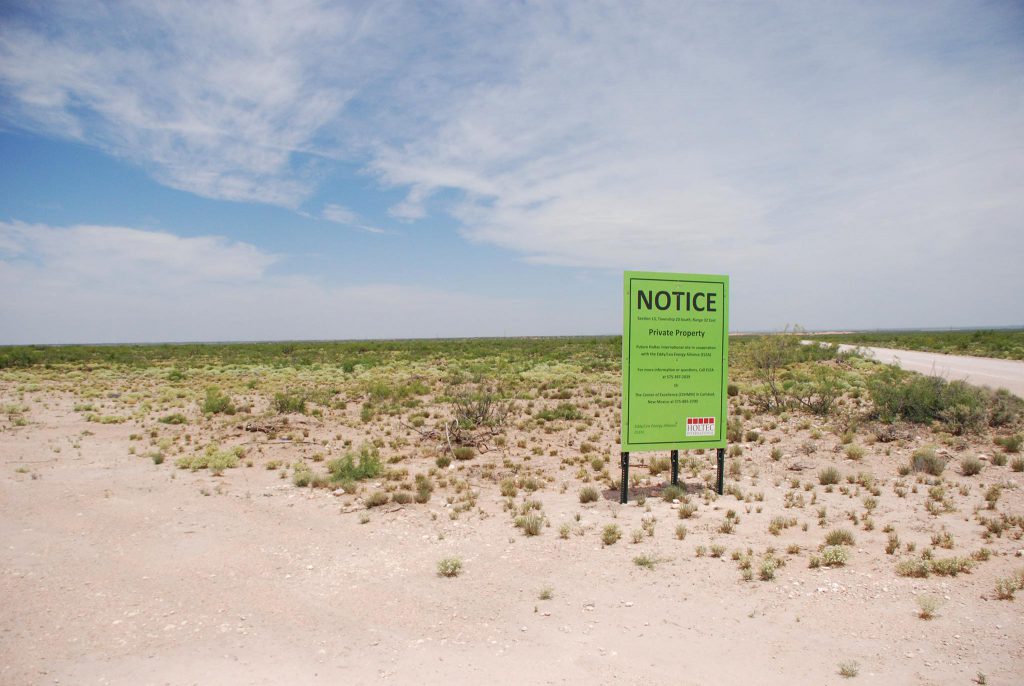
ALBUQUERQUE, N.M. (AP) — There’s growing frustration among New Mexico lawmakers and environmental regulators about the U.S. government’s slow pace in cleaning up contamination from decades of nuclear research and bomb-making at Los Alamos National Laboratory.
The officials shared their concerns during a legislative meeting Wednesday, saying New Mexico is taking a backseat to other states and that legal action might be their only leverage against the U.S. Energy Department as it sets priorities for the nation’s multibillion-dollar cleanup program for Cold War-era waste.
Since January, only five shipments of waste have been sent from Los Alamos to the government’s underground repository in southern New Mexico. Meanwhile, the Idaho National Laboratory is sending two to three shipments a week, or more than three times the goal environmental managers at Los Alamos have set for the coming year.
Russia warns it will see any incoming missile as nuclear
“The policy document offered a detailed description of situations that could trigger the use of nuclear weapons, including the use of nuclear weapons or other weapons of mass destruction against Russia or its allies.”
BY: The Associated Press, VLADIMIR ISACHENKOV | apnews.com
MOSCOW (AP) — Russia will perceive any ballistic missile launched at its territory as a nuclear attack that warrants a nuclear retaliation, the military warned in an article published Friday.
The harsh warning in the official military newspaper Krasnaya Zvezda (Red Star) is directed at the United States, which has worked to develop long-range non-nuclear weapons.
The article follows the publication in June of Russia’s nuclear deterrent policy that envisages the use of atomic weapons in response to what could be a conventional strike targeting the nation’s critical government and military infrastructure.
In the Krasnaya Zvezda article, senior officers of the Russian military’s General Staff, Maj.-Gen. Andrei Sterlin and Col. Alexander Khryapin, noted that there will be no way to determine if an incoming ballistic missile is fitted with a nuclear or a conventional warhead, and so the military will see it as a nuclear attack.
“Any attacking missile will be perceived as carrying a nuclear warhead,” the article said. “The information about the missile launch will be automatically relayed to the Russian military-political leadership, which will determine the scope of retaliatory action by nuclear forces depending on the evolving situation.”
The argument reflects Russia’s longtime concerns about the development of weapons that could give Washington the capability to knock out key military assets and government facilities without resorting to atomic weapons.
Groups raise concerns about new shaft at WIPP
“The Southwest Research and Information Center is among those opposing the project. The group filed legal challenges, saying environmental officials ignored existing regulations, past agency practices and case law when giving temporary approval for contractors to begin working.”
BY SUSAN MONTOYA BRYAN | santafenewmexican.com
ALBUQUERQUE — Crews working at the U.S. government’s underground nuclear waste repository in southeastern New Mexico are starting a new phase of a contentious project to dig a utility shaft that officials say will increase ventilation at the site where workers entomb the radioactive remnants of decades of bomb-making.
Officials at the Waste Isolation Pilot Plant near Carlsbad said this week the $75 million project is a top priority and that work will be done around the clock five days a week, with an additional shift on Saturdays. The shaft will eventually span more than four-tenths of a mile and connect to an underground system of passageways.
Surprising numbers in UNM report on lab’s impact
“BBER’s (UNM’s Bureau of Business and Economic Research) director Jeffrey Mitchell said in an email to a Regional Coalition official that the county financial figures show “there are some winners and some losers. I suspect that LANL was less interested in presenting that.”
BY JOURNAL NORTH EDITORIAL BOARD | abqjournal.com
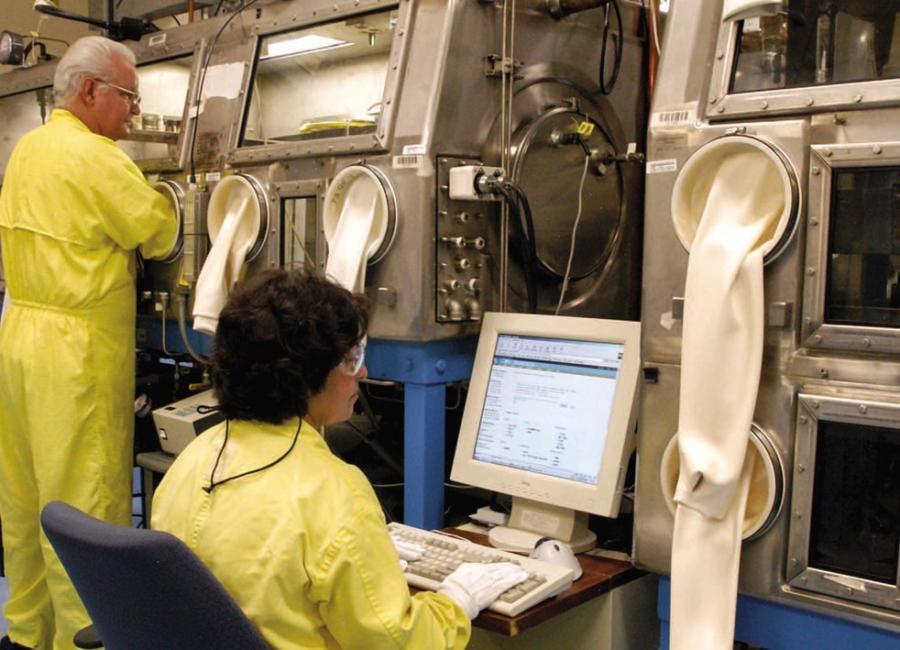
A recent study by the University of New Mexico’s respected economic studies office details the huge economic impact of Los Alamos National Laboratory on New Mexico.
NCI Virtual Briefing on results from the Study to Estimate Radiation Doses and Cancer Risks Resulting from Radioactive Fallout from the Trinity Nuclear Test
| UPDATE FROM THE NCI SUMMARY:
“The data suggest that perhaps several hundred cancers, primarily thyroid cancer, have already occurred over the 75 years since the test and a small number are projected to occur in the future that would not have occurred in the absence of radiation exposure from Trinity fallout. Most of the excess cancers are projected to have occurred or will occur among residents living in Guadalupe, Lincoln, San Miguel, Socorro, and Torrance counties in 1945. Significant uncertainty in dose estimation had a substantial impact on the total uncertainty around these estimates. Most cancers that have occurred or will occur among the 1945 residents of New Mexico are likely to be cancers unrelated to exposures from Trinity fallout. Finally, with the data available, it is not possible to definitively identify the specific individuals whose cancers might be due to the radiation exposure. |
Time is running out to end the threat of nuclear war.
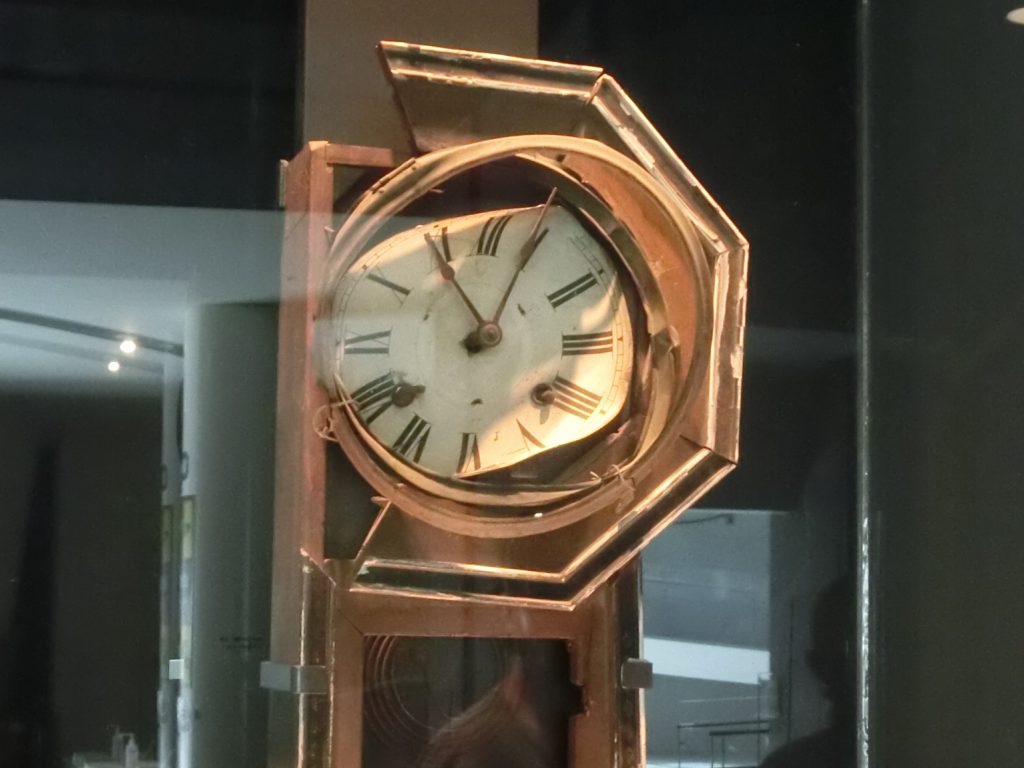
“The international arms control architecture is unraveling while there are currently 14,000 nuclear warheads with a combined destructive capacity of 100,000 Hiroshima bombs, over 90% in the hands of the U.S. and Russia…It is imperative that all states become parties to the Comprehensive Test Ban Treaty.”
Time is running out to end the threat of nuclear war. | denverpost.com
Former employees, families sue companies working on Piketon-area nuclear plant
“The lawsuit, filed last week, alleges workers and their families became ill due to the actions of U.S. Department of Energy contractors. The suit seeks a medical monitoring program to evaluate the multi-generational impact of radioactive contamination.”
Columbus, OH | Columbus Dispatch newsbreak.com
A lawsuit filed on behalf of former nuclear employees and their families accuses U.S. Department of Energy contractors of “poisoning workers and the people, land, air and water for miles” around the former Portsmouth Gaseous Diffusion Plant that was in southern Ohio.
The actions of DOE’s contractors released radioactive isotopes that “have created a situation akin to a creeping Chernobyl” and resulted in “injuries, sickness, disease, including cancers, damage to DNA, death, loss of and damages to property, and reduction in property values,” according to the lawsuit filed Thursday in U.S. District Court in Columbus.
The contamination likely spread in Pike, Scioto, Lawrence, Vinton and Adams counties in Ohio, according to the lawsuit.
NNSA Slams Door Shut on Public Accountability While Ramming Through Expanded Plutonium “Pit” Bomb Core Production
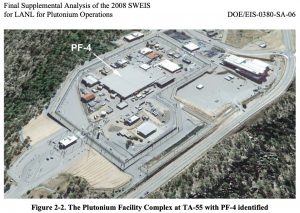
The National Nuclear Security Administration (NNSA) announced that it will NOT prepare a new site-wide environmental impact statement for the Los Alamos National Laboratory (LANL) (1). With this decision NNSA is slamming the door shut on public accountability while it rams through expanded plutonium “pit” bomb core production at the Lab. NNSA is relying upon outdated studies from 2008 to justify pit production. Since that time the agency has wasted billions of taxpayers’ dollars, another catastrophic wildfire threatened the Lab, serious deep groundwater contamination was discovered and LANL has had chronic nuclear safety incidences with plutonium that it can’t seem to fix.
Continue reading
Study: Cancer cases likely in those exposed to atomic test
“’The nuclear detonation exposed residents of New Mexico to varying levels of radiation from radioactive fallout, depending, in part, on where they lived in the state, how much time they spent inside protective structures in the immediate months after the test, and how much radiation entered their bodies through contaminated food and water,’ a summary of the research states.”
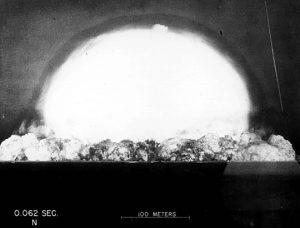
BY: SUSAN MONTOYA BRYAN | apnews.com
ALBUQUERQUE, N.M. (AP) — After years of study, the National Cancer Institute said Tuesday that some people probably got cancer from the radioactive fallout that wafted across New Mexico after the U.S. government detonated the first atomic bomb in 1945. However, the exact number is unknown.
Energy Dept. Taking Bids for Nationwide Waste Treatment Services
The Energy Department on Monday issued its final request for proposals (RFP) for nationwide low-level and mixed low-level waste treatment services. The agency could award more than one basic ordering agreement (BOAs) for the work, according to the document.
By: Exchange Monitor / exchangemonitor.com
The objectives of the BOAs are to provide Low Level Waste and Mixed Low Level Waste (including reactive metals such as lithium batteries, sodium bearing waste) Treatment services; Bulk Survey for Release Services (BSFR) services in accordance with Nuclear Regulatory Commission (NRC) or Agreement State requirements; Development and assessment of alternative disposition strategies; Low Activity Waste (LAW) services; and Ancillary services that aid in the treatment and processing of waste, such as transportation and packaging from the point of origin to the destination (treatment facility, disposal site, or return to the generator) creating a turnkey service.
Up to 1,000 Downwinders Likely Got Cancer From First Atomic Test, Study Says
As many as 1,000 New Mexicans living in communities near Trinity Site, where the first atomic bomb was detonated 75 years ago, might have developed cancer from the radioactive fallout, says a long-awaited Cancer Institute report released Tuesday.
BY: SCOTT WYLAND | santafenewmexican.com
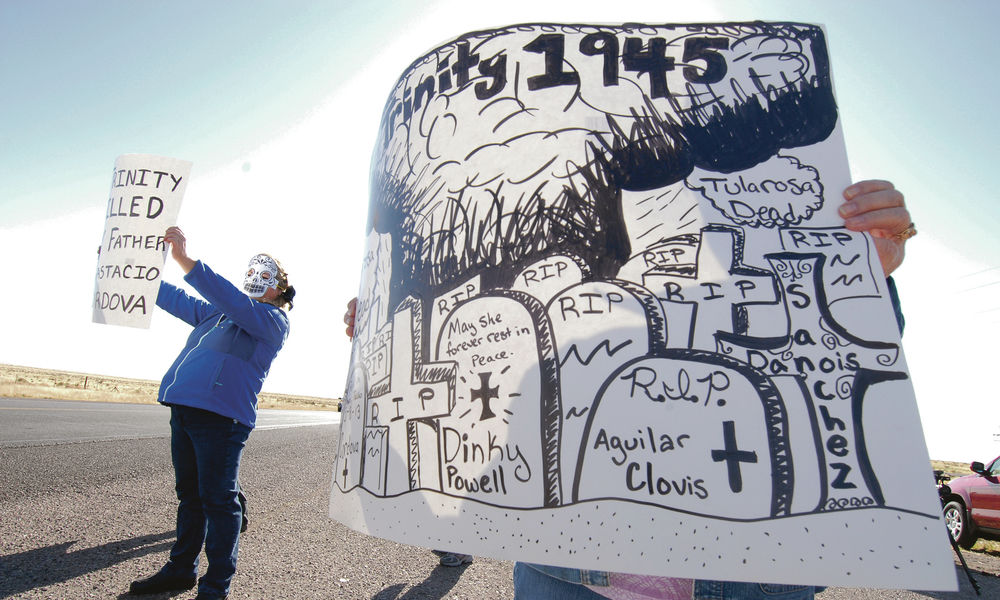
The institute’s findings were based on a six-year study that involved computer modeling, researching historical data and interviewing 210 elderly “downwinders” who lived close enough to the blast to suffer internal radiation exposure by ingesting contaminated milk and food.
The number of cancer victims could be less than 1,000 but is unlikely to be more, the study says.
There’s also no clear evidence the radiation was severe enough to cause genetic abnormalities that could be passed by birth to subsequent generations, the study says.
The study’s authors concede there’s much uncertainty in the report because so many years have passed since the test, the government didn’t conduct public studies of the test’s potential impacts on communities — due to the Manhattan Project’s secrecy — and cancer cases weren’t tracked nationally until the 1960s.
The report comes after decades of criticism from downwinder advocates, who have accused the federal government of refusing to acknowledge affected residents to avoid liability.
Some U.S. cities turn against first planned small-scale nuclear plant
“[Two] cities, Logan and Lehi, Utah have walked away from the project, and a third is now considering dropping its support because of risks and a lack of backers, according to officials.”
BY: Timothy Gardner, Nichola Groom | reuters.com

(Reuters) – The first U.S. small-scale nuclear power project, grappling with cost overruns and delays, faces another challenge: the defection of cities that had committed to buying its power. The more than 30 members of the public power consortium Utah Associated Municipal Power Systems (UAMPS) have until Sept. 30 to decide whether to stick with the project and devote more funds to NuScale Power LLC’s first-of-a-kind reactor.
SC Gov. McMaster objects to plutonium settlement and the $75 million in attorneys fees
BY JOHN MONK & SAMMY FRETWELL / thestate.com
The day before South Carolina’s attorney general announced a settlement that will bring $600 million to the state and start the process of removing deadly plutonium stores, Gov. Henry McMaster said he couldn’t support paying private lawyers in the deal $75 million or waiting two decades for the waste to be gone.
In a letter to S.C. Attorney General Alan Wilson written Sunday, McMaster said the roughly $75 million in fees the state will pay four S.C. law firms that worked on the deal — orchestrated by Wilson, the state’s members of Congress and Trump administration lawyers — is grossly excessive for the work they did.
“I simply cannot endorse the payment of $75 million in attorneys’ fees under the circumstances,” McMaster, a former state attorney general, told Wilson in a letter written Sunday.
In his letter, McMaster also said Wilson’s settlement agreement doesn’t give enough assurances that the U.S. Department of Energy will remove the deadly plutonium from South Carolina “in a timely manner.” The plutonium is stored at the Savannah River Site.
SC settles lawsuit over plutonium waste for record $600M
“According to a release, under the terms of the settlement, the Dept. of Energy remains obligated to remove the plutonium by 2037.”
BY: Alexx Altman-Devilbiss | wpde.com
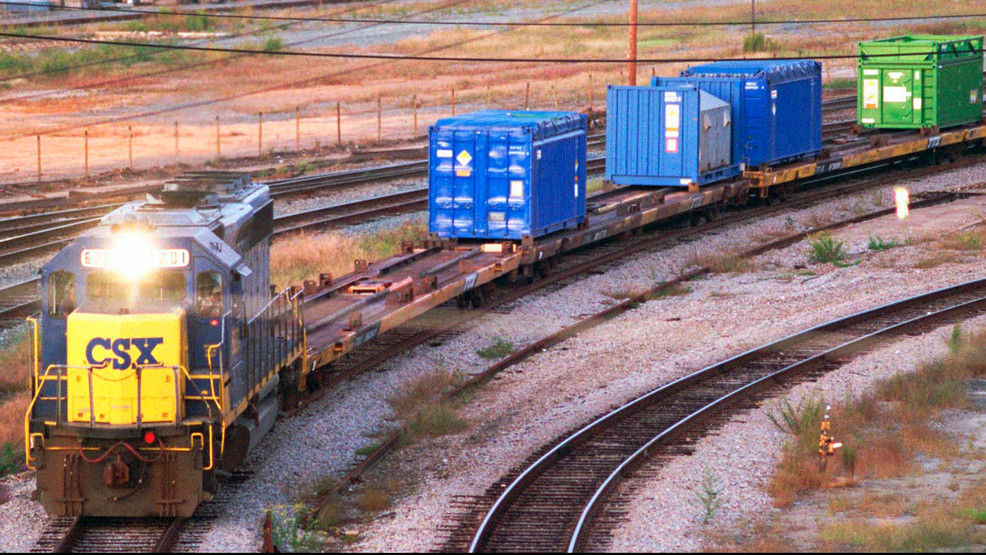
COLUMBIA, S.C (WPDE) — Attorney General Alan Wilson Monday announced the federal government will pay South Carolina $600 million and clean up weapons-grade plutonium to end six years of litigation.
“This settlement is the single largest settlement in South Carolina’s history. It is important to me that the people of South Carolina know of our long-term commitment to preventing South Carolina from becoming a dumping ground for nuclear waste,” said Wilson. “Additionally, the more than half a billion dollars in settlement money could not come at a better time as our state government and economy work to overcome the revenue shortfalls caused by the COVID-19 pandemic. It has been a long, difficult road but I am proud of the leadership displayed by our state’s elected officials and the expertise of my legal team.”
Nuclear War Makes a Comeback
It’s time to revisit the old fear that kept your parents up at night
BY CAROL POLSGROVE / sierraclub.org
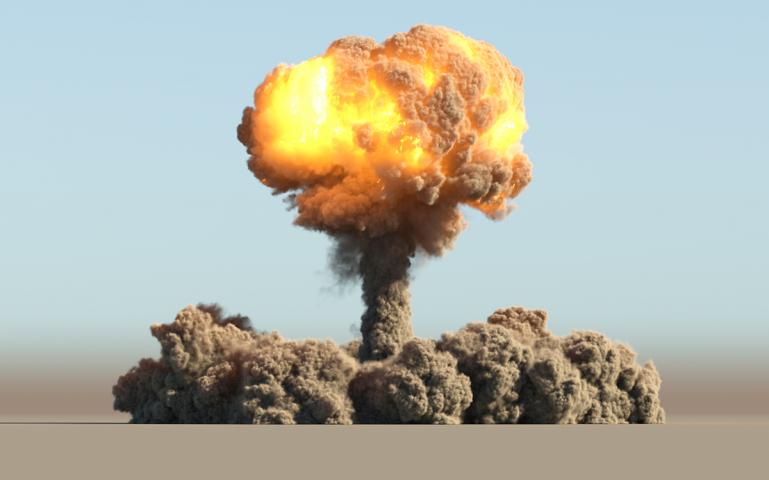
On websites where policymakers, scholars, and military leaders gather, concern about the possibility of nuclear war has been rising sharply in recent months as China, the United States, and Russia develop new weapons and new ways of using old ones.
On War on the Rocks, an online platform for national security articles and podcasts, Tong Zhao, a senior fellow at the Carnegie-Tsinghua Center for Global Policy, reported August 11 on public calls in China “to quickly and massively build up its nuclear forces” on the theory that only a “more robust nuclear posture” would prevent war with the United States.
The biggest nuclear arms budget ever is nearing approval in the US Congress, and the Trump administration has raised the possibility of resuming nuclear tests. President Trump has pulled the United States out of the 1987 Intermediate-Range Nuclear Forces (INF) treaty with Russia, while the New Start Treaty capping Russian and US nuclear warheads and delivery systems is set to expire next February if the two countries don’t agree to extend it.
Vatican representative calls on U.S. to sign nuclear-test-ban treaty
“The treaty is a critically important step toward creating a world without nuclear weapons…Each of the remaining eight states should strongly back up its words in favor of peace by being the first to sign.”
BY: Cindy Wooden | catholicnews.com
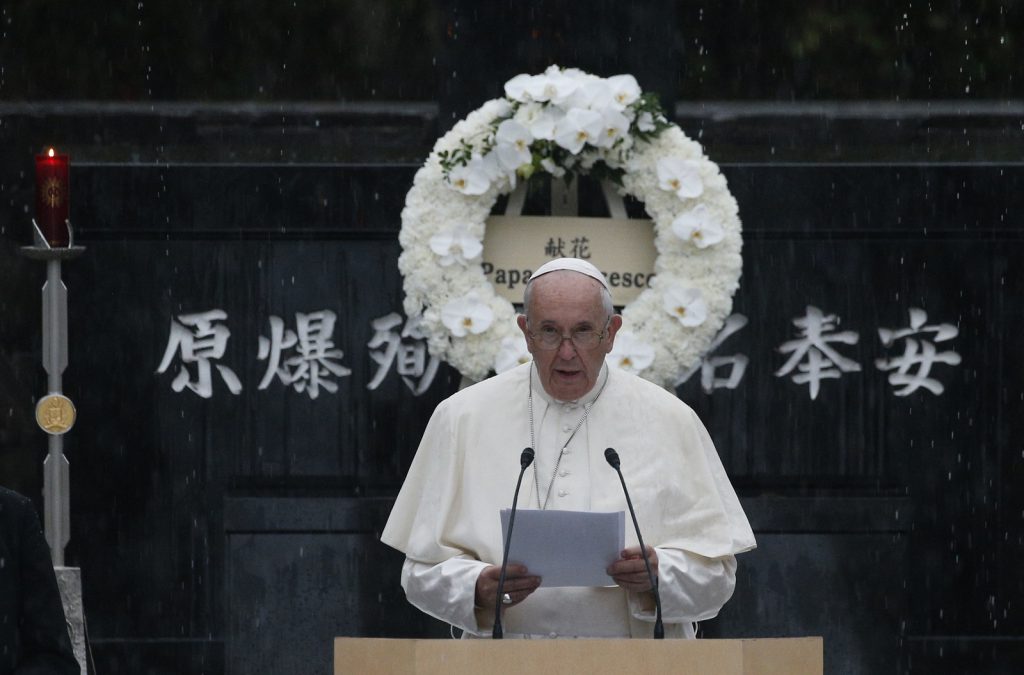
VATICAN CITY (CNS) — The COVID-19 pandemic has highlighted the absurdity of “pouring valuable resources into the maintenance of weapons of destruction while so many on this planet are struggling to survive,” a Vatican representative told a U.N. meeting to commemorate and promote the International Day Against Nuclear Tests.
It is impossible to make a moral case for continued nuclear weapon testing,” said Msgr. Fredrik Hansen, charge d’affaires at the Permanent Observer Mission of the Holy See to the United Nations.
“There should never be another nuclear test explosion,” he told the online meeting Aug. 26.
The United Nations has designated Aug. 29 as the International Day Against Nuclear Tests, and Msgr. Hansen used the occasion to call on China, Egypt, India, Iran, Israel, North Korea, Pakistan and the United States to ratify the 1996 Comprehensive Nuclear-Test-Ban Treaty.
Smith and Menendez Statement on the Immense Costs of Allowing the New START Treaty to Expire
Already exorbitant nuclear weapons costs will only go up if the New START treaty expires.
“Extending the New START Treaty for a full five years is clearly the right financial and national security choice. America cannot afford a costly and dangerous nuclear arms race, particularly in the middle of our current economic, political, and health crises.”
FOR IMMEDIATE RELEASE: August 26, 2020
Contact:
Smith: Monica Matoush // 202-226-5048
Menendez: Juan Pachon // 202-224-4130
WASHINGTON, D.C. – Representative Adam Smith (D-Wash.), Chairman of the House Armed Services Committee, and Senator Bob Menendez (D-NJ), Ranking Member of the Senate Foreign Relations Committee, today issued the following statement after the Congressional Budget Office (CBO) published a new report regarding the potential costs of expanding U.S. strategic nuclear forces if the New Strategic Arms Reduction Treaty (New START) Expires:
“CBO’s nonpartisan report is clear: The Trump administration’s unwillingness to continue the decades of strategic arms control by failing to extend the New START Treaty is driving the United States toward a dangerous arms race, which we cannot afford. While this report only begins to account for the costs of the Administration’s preposterous claims that we can ‘spend the adversary into oblivion,’ it is further proof of why New START is essential to U.S. and international security.
Catholics Against Nukes: Archbishop Wester’s Hiroshima Vigil
As long as nuclear deterrence, that most unmeasured of strategies, remains, it keeps company with the prospect of use and annihilation. Coghlan, in his rebuke to the editors also penned in the Albuquerque Journal, gave an acid summation: “the US arsenal has always been about nuclear war fighting, starting with the simple fact that we were the first to use it.” Only “sheer luck has kept us from nuclear catastrophe.”
BY: Binoy Kampmark | scoop.com/nz
In what is a turn-up for the books, a senior voice of the Catholic Church made something of an impression this month that did not incite scandal, hot rage, or the commencement of an investigation. It did, however, agitate a few editors. Archbishop John C. Wester of San Fe, in speaking at the online Hiroshima Day vigil, had put up his hand to defy the validity and morality of nuclear weapons and, along with them, the idea of nuclear deterrence. One of the organisers of the event, the veteran peace activist Rev. John Dear, claimed it had “never happened before.”
Dear had a point. There has been a shift within Catholic ranks urged along by Pope Francis on that most fatuous of strategic doctrines, nuclear deterrence. Before the United Nations General Assembly in June 1982, Pope John Paul II chose to argue that nuclear “‘deterrence’ based on balance, certainly not as an end in itself but as a step on the way toward a progressive disarmament, may still be judged morally acceptable.”
2019
Nuclear watchers warn of pit production hazards, consequences during Aiken forum
The environmental disaster at the nixed Rocky Flats Plant in Colorado should be a red flag to those in the CSRA, watchdogs cautioned Tuesday, as the nation’s energy and defense departments consider establishing a new nuclear weapons mission at the sprawling Savannah River Site.
ARTICLE BY: COLIN DEMAREST | aikenstandard.com
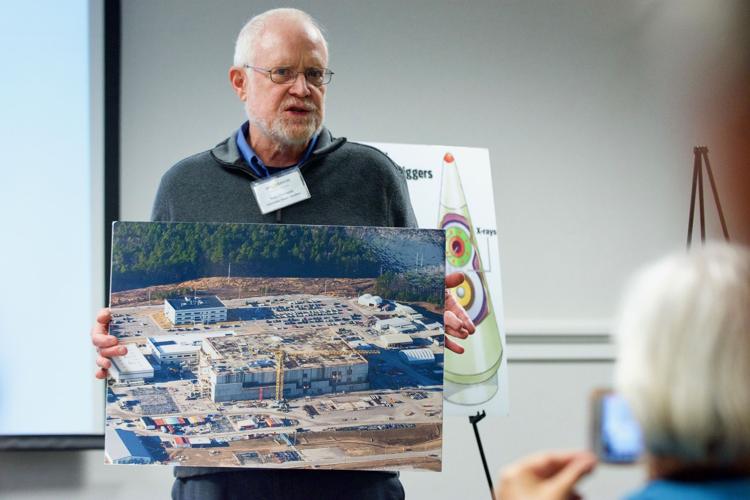
SRS Watch Director Tom Clements and representatives of the Rocky Mountain Peace and Justice Center in Colorado on Tuesday warned roughly two-dozen forum attendees of health and environmental repercussions that could come with a local plutonium pit production mission, as has been suggested.
The Rocky Flats Plant was the last place the federal government produced pits, nuclear weapon cores, en masse.
It was raided by the FBI decades ago following a clandestine investigation, was subsequently shuttered and then shoddily cleaned up, according to Pat Mellen, a Colorado-based attorney who spoke Tuesday.
“It was an absolute disaster,” Clements said of the Rocky Flats facility, which is near Denver. “Plutonium fires, releases, worker exposure, downwind exposure. We have been where you’re at right now, and we did it wrong,” Mellen said, speaking after the SRS Watch director. “We did it wrong at Rocky Flats.”
The Department of Defense and the National Nuclear Security Administration, part of the Department of Energy, in May 2018 recommended producing pits at the Savannah River Site, about 30 minutes south of Aiken.
While many local officials and lawmakers have welcomed the enduring mission, others, like Clements, have expressed repeated concerns.
“I used to tell students, ‘If you want to be protected from Rocky Flats, don’t breathe,'” said LeRoy Moore, another speaker at the Tuesday night event. That comment received some laughs.
The proposed production hub at SRS, a never-completed and repurposed Mixed Oxide Fuel Fabrication Facility, would be one prong in a two-pronged plan. Another 30 pits per year would be produced at Los Alamos National Laboratory in New Mexico, according to the recommendation.
Here’s how a CR could hurt America’s nuclear weapons modernization
“There could also be high-dollar costs. Responding to a lawsuit by environmental groups trying to halt the construction of the Y-12 facility in Tennessee, NNSA said a six- to 12-month delay in construction at that location could result in almost $1 billion in extra costs for taxpayers and the agency may have to lay off 1,000 construction personnel. Those numbers, first reported by the Exchange Monitor, likely have resonance with other potential delays at construction sites caused by a CR — meaning construction delays at one or more sites could quickly become costly for an agency whose facilities and construction needs have traditionally been underfunded.”
ARTICLE BY: AARON MEHTA | defensenews.com
WASHINGTON — A long-term continuing resolution will result in delays for modernizing America’s nuclear warheads, while putting at risk an already challenging plan to build plutonium pits needed for the next generation of U.S. intercontinental ballistic missiles, nuclear officials are warning.
The National Nuclear Security Administration is a semiautonomous agency under the Department of Energy that handles the manufacturing and maintenance of America’s nuclear warheads. Like other government agencies, NNSA would be limited to fiscal 2019 funding limits under a continuing resolution, and it would be unable to start new contracts.
The current continuing resolution, or CR, is set to end Nov. 21, but there is little expectation that regular budgeting will then resume. Congress is debating the merits of pushing the CR through December, but analysts are concerned the CR could extend into next year.
“We are in a situation right now where we have single-point failures throughout our enterprise,” Lisa Gordon-Hagerty, the NNSA administrator, said during a Defense Writers Group breakfast earlier this month. “It’s necessary for us, for the NNSA and for the nuclear security enterprise to receive consistent and robust funding to modernize our infrastructure as well as continue ongoing operations.”
“We’re looking at where we can move funding insofar as CRs will allow us to do so,” she added. “We’re working very closely with OMB and the administration to see what we can do to continue our important programs to modernize the infrastructure as well as the stockpile and our workforce initiatives and our endeavors.”
Citizens Rebut Government Attempt To Continue Illegal Construction Of Nuclear Weapons Plant
12 November 2019 for immediate release
Calling the National Nuclear Security Administration’s brazen disregard for a federal court’s September 24, 2019, ruling an “abuse of the judicial process,” the Oak Ridge Environmental Peace Alliance, Nuclear Watch New Mexico, and the Natural Resources Defense Council, along with four individual plaintiffs, returned to federal court in Knoxville, TN, today to file a rebuttal of the NNSA’s argument that the agency should be allowed to continue construction on a new nuclear weapons production plant “in the interim”—even while they are preparing the studies that will tell them whether the facilities can be made safe for workers and the public in the event of an earthquake.
Continue reading
$1.5 MILLION IN NEW GRANTS TO STOP NUCLEAR THREATS
The Ploughshares Fund board of directors recently awarded grants to over 20 organizations
The Ploughshares Fund board of directors recently awarded $1.5 million in new grants to over 20 organizations working to end nuclear threats.
“These investments will develop new champions, provide vital research and empower American citizens to create a new vision for a saner nuclear policy,” said Ploughshares Fund President Joe Cirincione. “We have a balanced portfolio,” Cirincione explained, “The board invests in the best expert research, the most effective advocates, the clearest media messengers and, increasingly, in the new mass movements energizing public involvement on policy issues.”
For example, a new grant to National Security Action will allow that organization of former and future government officials to craft a new nuclear posture plan for the United States. To promote diplomacy and reduce the risk of war, the board gave a grant to the Quincy Institute for Responsible Statecraft to help launch this new institute and work on the threat of new wars in the Middle East and to promote diplomacy with North Korea. “We want to inject new ideas and proposals, providing political space to de-escalate current tensions and create viable diplomatic solutions,” said Director of Programs Michelle Dover.
EU Labors to Keep Nuclear Deal Alive After New Iran Moves
“It’s a great agreement and we need to keep it alive,” Slovakia’s foreign minister, Miroslav Lajcak, told reporters.
However, the Europeans are hardly surprised by Iran’s actions. They believe the writing has been on the wall ever since Trump withdrew from the nuclear agreement last year, claiming that it does not to stop Tehran from developing missiles or undermining stability in the Gulf region.
“Sadly, it’s a degradation that was to be expected,” Asselborn said.
ARTICLE BY: LORNE COOK | dailyinterlake.com

BRUSSELS (AP) — European Union foreign ministers on Monday affirmed their support for the nuclear deal with Iran, after the Islamic Republic began enrichment work at its Fordo site in a fresh act of defiance that seems likely to spell the end of the painstakingly crafted international agreement.
At talks in Brussels, the ministers mulled what action to take as they awaited a new report from the International Atomic Energy Agency later Monday on whether Iran is still complying with its commitments.
EU foreign policy chief Federica Mogherini said that the ministers underlined their “full commitment to the agreement that remains crucial for our security, even if it’s increasingly difficult to preserve it. We will continue our efforts to have a full implementation of the agreement.”
The EU powers that signed the 2015 Iran nuclear deal — Britain, France and Germany — were due to hold talks later Monday in Paris to discuss the next steps once the U.N.’s nuclear watchdog issues its latest findings.
A joint commission meeting of all the signatories is likely to be held in coming days.
One Year After Woolsey Fire, Federal Agencies Escalate Efforts to Abandon Cleanup of Contaminated Nuclear Site Where Fire Began
Boeing, Dept. of Energy and NASA push plans to renege on agreements to fully clean up the Santa Susana Field Lab, point of origin for Woolsey Fire
“Time and again, Boeing has cut corners on safety, whether on its airplanes or at SSFL, putting profits above all else.”
“The failure to clean up the site added insult to injury for people impacted by the fire.”
Contact: Denise Duffield, 310-339-9676 or dduffield@psr-la.org, Dan Hirsch, 831-336-8003 or dhirsch1@cruzio.com, Melissa Bumstead melissabumstead@sbcglobal.net | psr-la.org
One year after the devastating Woolsey Fire began at and burned most of the contaminated Santa Susana Field Laboratory (SSFL,) Boeing, the Department of Energy and NASA are pushing forward plans to abrogate cleanup agreements and leave most of the radioactive and chemical contamination on the site unremediated. SSFL is grossly polluted from decades of nuclear and rocket-engine testing activities including several accidents, spills, and intentional toxic releases.
On November 8, 2018, the Woolsey Fire ignited approximately 1,000 yards from the site of a partial nuclear meltdown of SSFL’s Sodium Reactor Experiment. The fire burned approximately 80% of the contaminated 2,850 acre facility before burning to Malibu, scorching nearly 97,000 acres, 1,643 structures, and prompting the evacuation of more than a quarter million people in one of Southern California’s worst wildfires to date. Three people lost their lives in the fire.
“All nations should declare—all nations—that nuclear weapons must be destroyed. This is to save ourselves and our planet.”
Mikhail Gorbachev tells the BBC: World in ‘colossal danger’
The former Soviet leader Mikhail Gorbachev has warned that current tension between Russia and the West is putting the world in “colossal danger” due to the threat from nuclear weapons. In an interview with the BBC’s Steve Rosenberg, former President Gorbachev called for all countries to declare that nuclear weapons should be destroyed.
Why should anyone trust LANL on nuclear safety?
Ask the downwinders of nuclear weapons tests at the Marshal Islands and the Nevada Test Site whether the government should be trusted. Why should LANL be trusted, when it used to claim that groundwater contamination was impossible, but today we know it is contaminated with chromium, perchlorates, high explosives, etc.?
More recently, how can the public trust LANL when it sent an improperly prepared radioactive waste barrel that ruptured and closed the Waste Isolation Pilot Plant for three years, contaminating 21 workers with plutonium and costing the American taxpayer $3 billion to reopen?
November 5 This week features Princeton physicist Dr. Zia Mian, sitting down with Michelle Dover to discuss the India-Pakistan nuclear dyad and whether the global nuclear order is worth saving.
“Who decides how human society and human civilization conducts affairs,” Dr. Mian asked Dover. “Nine countries with nuclear weapons or everybody else?”
Before that, Esther Im from the National Committee on North Korea joins Michelle Dover and Akshai Vikram for the Early Warning news segment.
Listen, Subscribe and Share on iTunes · Spotify · SoundCloud · YouTube · Google Play · Sticher
Also available on ploughshares.org/pressthebutton
2018
The West’s atomic past, in opera halls
The West’s atomic past, in opera halls
On stage and in Congress, Trinity test downwinders fight for recognition.
Elena Saavedra Buckley, High Country News, Aug. 30, 2018
Outside the Santa Fe Opera, a 62-year-old venue nestled in juniper-covered hills, retirees reclined by cloth-covered tables in the parking lot. As the August heat reflected off the asphalt, they tailgated with flutes of champagne. Soon, they would file in to see Doctor Atomic, an opera about physicist J. Robert Oppenheimer and the 24 hours before the first atomic bomb, which he helped create, detonated over New Mexico’s Tularosa Basin in the Trinity test.
Doctor Atomic has been performed in New York and San Francisco, but never before in New Mexico, where Manhattan Project scientists from Los Alamos Laboratory created the bomb. John Adams composed the opera in 2005, and Peter Sellars’s libretto uses declassified Los Alamos documents, focusing on the scientists’ perspective. This was the first time that downwinders — people whose families lived in the Tularosa Basin, in the path of the bomb’s radiation — appeared on stage during a performance. This summer, 73 years after Trinity, New Mexico’s downwinders are finally receiving some attention — onstage and in Congress.
The Trinity test occurred at 5:30 a.m. on July 16, 1945, about 150 miles south of Santa Fe and the laboratory and only weeks before the bombings in Japan. It bathed the basin in light, creating a half-mile-wide crater. The Tularosa Basin Downwinders believe that blast’s radiation gave their families cancer, either from the air or through milk and produce, and that the diseases are being passed down genetically.
Trump Administration Muzzles Nuclear Weapons Safety Watchdog
Trump Administration Muzzles Nuclear Weapons Safety Watchdog
The administration, working in open alliance with profit-making contractors, is scaling back the safety group’s authority and slashing its staff.
Center For Public Integrity
08.30.18 6:00 AM ET
By Patrick Malone, Center for Public Integrity
A small government safety organization tasked with protecting the workers who construct America’s nuclear arsenal and with preventing radioactive disasters in the communities where they live is under new siege in Washington.
The Trump administration, acting in an open partnership with the profit-making contractors that control the industrial sites where U.S. nuclear bombs are made and stored, has enacted new rules that limit the authority and reach of the Defense Nuclear Facilities Safety Board, created by Congress in 1988 amid broad public concerns over civil and military nuclear safety lapses.
The administration’s new rules eliminate the board’s authority to oversee workplace protections for roughly 39,000 nuclear workers and also block its unfettered access to nearly three-quarters of the nuclear weapons-related sites that it can now inspect.
In a separate move, the board’s new acting Republican chairman has proposed to put more inspectors in the field but to cut its overall staff by nearly a third, including letting some of its supporting technical experts in Washington go. The board already has one of the smallest oversight staffs of any federal agency.
The twin assaults on the operations and authority of the safety board come just as the Energy Department, acting at President Trump’s direction, is embarking on the most aggressive era of nuclear weapons production since the Cold War. Trump has called for one new nuclear bomb to be produced immediately and for the production of another new bomb to be studied.
A Nuclear Energy Meltdown Scrambles Southern Politics
A Nuclear Energy Meltdown Scrambles Southern Politics
South Carolinians have some of the highest electricity bills in the country, thanks in part to nuclear energy
BY ANDREA COOPER | AUG 30 2018
REVEREND LEO WOODBERRY CLUTCHED the pulpit, his voice rumbling toward the people gathered in the basement theater at Little Rock AME Zion church. Around 75 men and women wearing everything from stylish dresses to blue jeans and T-shirts sat in rapt attention.
“Talk to your friends,” Woodberry implored, wearing a “Justice First” T-shirt and a baseball hat. “Your neighbors, your commissioners, your mayors. Tell them we are ready right now to move away from fossil fuels. We’re ready to make our cities 100 percent renewable!”
People clapped, whistled, and cheered “Yes!” and “Amen!”
Woodberry was on his Justice First Tour in Charlotte, North Carolina, 100 miles from his home in Florence, South Carolina. The environmental activist had come here to proclaim that the moment had arrived for the climate change, women’s rights, immigrants’ rights, criminal justice reform, and marriage equality movements to unite for a common cause: opposing an extractive economy “based on death and destruction and sickness.”
That same economy is responsible for an unprecedented energy and financial disaster in Woodberry’s home state: A $9 billion nuclear project—once heralded as part of a U.S. nuclear revival—has been abandoned after years of delays and mismanagement. One of the South Carolina utilities responsible for the colossal failure has billed its customers $37 million each month to recoup costs.
A Salute to Whistleblowers – Mark your calendar! Sept. 25 at 7pm at CCA
|
The US Government Is Updating Its Nuclear Disaster Plans And They Are Truly Terrifying
The US Government Is Updating Its Nuclear Disaster Plans And They Are Truly Terrifying
“We are looking at 100 kiloton to 1,000 kiloton detonations,” a FEMA official said.
Dan Vergano BuzzFeed News Reporter
Reporting From Washington, DC
Posted on August 24, 2018, at 11:59 a.m. ET
Amid concerns over North Korea, federal emergency managers are updating disaster plans to account for large nuclear detonations over the 60 largest US cities, according to a US Federal Emergency Management Agency official.
The shift away from planning for small nuclear devices that could be deployed by terrorists toward thermonuclear blasts arranged by “state actors” was discussed on Thursday at a two-day National Academies of Sciences workshop for public health and emergency response officials held at its headquarters across the street from the US State Department.
“We are looking at 100 kiloton to 1,000 kiloton detonations,” chief of FEMA’s chemical, biological, radiological, and nuclear branch Luis Garcia told BuzzFeed News. The agency’s current “nuclear detonation” guidance for emergency planners, first released in 2010, had looked at 1 to 10 kiloton blasts — smaller than the 1945 Hiroshima and Nagasaki atomic bombs that killed more than 200,000 people at the end of World War II. Those smaller size detonations had seemed more reasonable after 9/11, with high concerns about an improvised terrorist bomb.
CALIFORNIA LEADS THE WAY IN SUPPORT OF NUCLEAR DISARMAMENT
California State Legislature Passes Pro-Nuclear Disarmament Resolution
Sacramento–Assembly Joint Resolution 33 (AJR 33), introduced by Santa Barbara’s State Assembly member, Monique Limón, passed in the state Senate today by a vote of 22 to 8. This marks a huge step forward in California’s support of nuclear disarmament and puts the state at the forefront of this critical issue.
The resolution calls on federal leaders and our nation to embrace the Treaty on the Prohibition of Nuclear Weapons, make nuclear disarmament the centerpiece of our national security policy, and spearhead a global effort to prevent nuclear war. (More on the Treaty here.)
Rick Wayman, Deputy Director of the Nuclear Age Peace Foundation, a non-partisan, non-profit organization headquartered in Santa Barbara whose mission is to create a peaceful world, free of nuclear weapons, was asked by Limón to testify in support of the Resolution.
Challenging the UPF Bomb Plant – Y-12 Supplement Analysis Comments
On July 5, 2018, OREPA and Nuclear Watch New Mexico—along with many of you!—submitted formal comments on the National Nuclear Security Administration’s plan for the Y-12 Nuclear Weapons Complex in Oak Ridge, TN. The gist of our comments is that NNSA is required to prepare a new Environmental Impact Statement, or at least a thorough Supplemental EIS, and can’t move forward with the UPF bomb plant until they have done so.
The comments, which you can read or download here, now become part of the Administrative Record which the judge hearing our legal challenge will use to decide the case.
We believe the government’s attempt to rectify their past errors is way too little and way too late, and the Supplement Analysis has effectively strengthened our argument. In addition to the comments, we also submitted attachments, including expert declarations on the NNSA’s plans, the seismic risks they are overlooking, and the unsuitability of a piecemeal approach to planning at Y12. You can read or download the attachments here.
Watchdog groups oppose DOE attempt to limit oversight, endanger safety at nuclear facilities
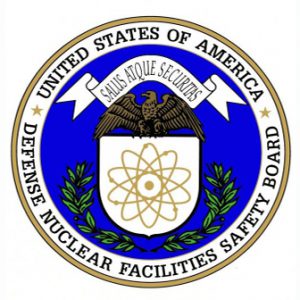
Alliance for Nuclear Accountability
CONTACTS:
Kathy Crandall Robinson (Washington, DC): 202 577 9875
Joni Arends (New Mexico): 505 986 1973
Tom Carpenter (Washington state): 206 419 5829
Tom Clements (South Carolina): 803 834 3084
Jay Coghlan (New Mexico): 505 989 7342
Don Hancock (New Mexico): 505 262 1862
Ralph Hutchison (Tennessee): 865 776 5050
Marylia Kelley (California): 925 443 7148
Watchdog groups from across the nuclear weapons complex are pushing back against a new Department of Energy order that severely constrains the oversight capacity of the Defense Nuclear Facilities Safety Board [DNFSB] at an August 28 hearing in Washington, DC. Kathy Crandall Robinson will speak at the hearing.
Members of the Alliance for Nuclear Accountability, a national network of organizations that addresses nuclear weapons production and waste cleanup issues, hail the work of the DNFSB as a critical guard against DOE and National Nuclear Security Administration efforts to cut corners on safety.
“The Safety Board works outside of the media spotlight,” said Tom Clements, Director of Savannah River Site Watch in Columbia, South Carolina.
“Its value to the public is immeasurable. DNFSB frequently provides information about SRS operations which DOE fails to communicate. The role of the Safety Board should be expanded, not curtailed.”
Marylia Kelley, Executive Director of Tri-Valley CAREs in Livermore, California, said, “The DNFSB is absolutely vital to worker and public safety. I have spent 35 years monitoring Livermore Lab. I can tell you that workers and community members rely on the Safety Board to do its job—every day!”
DOE MUST RESTORE DEFENSE NUCLEAR FACILITIES SAFETY BOARD ACCESS TO INFORMATION, NUCLEAR SECURITY FACILITIES, AND PERSONNEL
DOE MUST RESTORE DEFENSE NUCLEAR FACILITIES SAFETY BOARD ACCESS TO INFORMATION, NUCLEAR SECURITY FACILITIES, AND PERSONNEL
On May 14, 2018, the Department of Energy (DOE) Deputy Secretary approved DOE Order 140.1Interface with the Defense Nuclear Facilities Safety Board,which limits release of information, limits the DNFSB’s access to nuclear security sites, and personnel. The impacts are already being felt by Congress, the Board, DOE contractors and workers, and in communities located near some of the most dangerous nuclear facilities across the nation.
What you can do –
The Board is holding a public hearing on Tuesday, August 28, 2018, from 9 am to 12:30 pm Eastern Day- light Time. It will be live streamed and the link will be available on the day of the hearing.
Public comments will be accepted until September 28, 2018.
Read the Alliance for Nuclear Accountability Fact Sheet here.
The modern nuclear arsenal: A nuclear weapons expert describes a new kind of Cold War
The modern nuclear arsenal: A nuclear weapons expert describes a new kind of Cold War
Nuclear Knowledge: The modern nuclear arsenal
https://www.washingtonpost.com/video/politics/nuclear-knowledge-the-modern-nuclear-arsenal/2018/08/20/9d370fec-a0b8-11e8-a3dd-2a1991f075d5_video.html
Secrecy, bombastic threats and doomsday talk abound when talking about nuclear weapons, so The Post sat down with expert Hans Kristensen to clear the air. (Jenny Starrs /The Washington Post)
By Jenny Starrs
August 24 at 7:00 AM
With the flurry of talks with North Korea and the fallout from the U.S. withdrawal from the Iran nuclear deal, nuclear weapons have become a major topic of discussion in recent months. But secrecy abounds: Who has what weapons? How many? How much damage could they do?
Hans Kristensen tries to answer those questions. As the director of the Nuclear Information Project at the Federation of American Scientists, Kristensen and his colleagues delve into open source data, analyze satellite imagery and file requests under the Freedom of Information Act to get the most accurate picture of the world’s nuclear-armed countries. The initiative produces reports on nuclear weapons, arms control and other nuclear matters, and gives recommendations on how to reduce the role and number of nuclear weapons worldwide.
Kristensen sat down with The Washington Post to discuss how the United States’s nuclear capabilities stack up with the rest of the world, and potential problems down the road. The questions and answers have been edited for brevity.
2017
Public Interest Organizations File Lawsuit Against New Nuclear Bomb Plant
Public Interest Organizations File Lawsuit Against New Nuclear Bomb Plant
July 20, 2017
Contact: Jay Coghlan, NWNM, 505.989.7342, c. 505.470.3154, jay[at]nukewatch.org
Washington, DC – Today, the Oak Ridge Environmental Peace Alliance (OREPA), Nuclear Watch New Mexico, and the Natural Resources Defense Council filed a federal lawsuit to stop construction of the problem-plagued Uranium Processing Facility (UPF) until legally required environmental review is completed. The UPF, located at the National Nuclear Security Administration’s (NNSA’s) Y-12 production plant near Oak Ridge, TN, is slated to produce new thermonuclear weapons components until the year 2080. The UPF is the tip of the spear for the U.S.’s planned one trillion dollar-plus make over of its nuclear weapons arsenal, delivery systems, and production plants.
“The story of this new bomb plant is a long tale of outrageous waste and mismanagement, false starts and re-dos, a federal agency that refuses to meet its legal obligation to engage the public, and a Senator that is bent on protecting this piece of prime nuclear pork for his home state,” said Ralph Hutchison, coordinator of OREPA. “But the short version is this: when the NNSA made dramatic changes to the UPF, and admitted that it intends to continue to operate dangerous, already contaminated facilities for another twenty or thirty years, they ran afoul of the National Environmental Policy Act. Our complaint demands that the NNSA complete a supplemental environmental impact statement on the latest iteration of its flawed plans.”
The NNSA first issued a formal “Record of Decision” to build the UPF in 2011. Within a year, the agency had to admit it had made a half-billion dollar mistake because the designed footprint of the bomb plant was not big enough to hold all of the required equipment and safety features. The American taxpayer had to eat that half billion dollars, as the NNSA held no contractor responsible for it. The agency’s parent organization, the Department of Energy, has been on the Government Accountability Office’s High Risk List for project mismanagement and chronic cost overruns for 26 consecutive years.
More recently, the House FY 2018 Energy and Water Development Appropriations report noted that the NNSA had to reprogram $403 million out of the UPF’s $1.4 billion contingency fund to address “unforeseen issues” before ground is even broken. Both the NNSA and Sen. Lamar Alexander (R.-TN, chair of Senate Energy and Water Development Appropriations Subcommittee) have repeatedly claimed that UPF construction will not exceed $6.5 billion. That declared budget cap seems increasingly uncertain, which could have serious negative political consequences for the troubled facility.
The UPF started with an original estimated price tag of between $600 million to $1 billion in 2006. In December 2013 an independent cost assessment by the Department of Defense pegged the UPF at more than $19 billion, which stopped the project dead in its tracks and compelled NNSA to develop a new approach. The agency commissioned a “Red Team” to perform a quick, secret study, whose recommendation was eventually adopted. In July 2016, the NNSA published an Amended Record of Decision in the Federal Register describing its new plan.
“It was a dramatic change,” commented Jay Coghlan, Executive Director of Nuclear Watch New Mexico. “Instead of consolidating all enriched uranium operations into one big, new UPF, NNSA decided to build multiple smaller but integrated buildings, only one of which would be designed to modern seismic standards. More importantly, the agency declared it would continue to indefinitely use deteriorating, already contaminated facilities for dangerous highly enriched uranium operations, while admitting that the buildings can not meet current environmental and seismic standards.”
The National Environmental Policy Act requires a federal agency to revisit any environmental analysis when its plan undergoes significant changes that might impact the environment, or when new information comes to light. It also requires public involvement throughout the process. “NEPA’s fundamental purposes are to ensure that agencies take a hard look at consequences before taking action and to ensure that the public has a voice in agency decisions,” said William Lawton, an attorney working on the case at Meyer Glitzenstein & Eubanks, LLP. “Here, the NNSA has chosen to save money by continuing to rely on outdated, deteriorating buildings that run a very real risk of collapsing and releasing nuclear contamination in the event of an earthquake. The agency is putting the public at risk, and the public has a right to make sure that the government has taken the legally required hard look at those serious risks.”
“Since 2011, despite our repeated efforts to get information, including filing Freedom of Information Act requests, visiting DOE offices, asking officials for information and writing hundreds of letters, we have been shut out of the process completely,” noted OREPA’s Hutchison. “When we saw the final document, admitting that they were going to continue to use dangerous risky facilities without bringing them up to code, we realized why the NNSA was so determined not to make its plan public.”
Coghlan noted that the NNSA faced a similar scenario several years ago at the Los Alamos National Laboratory in New Mexico when plans for a huge new plutonium pit fabrication facility were substantially changed. “We told NNSA they had to complete more public review, and the agency wisely decided to prepare a supplemental environmental impact statement,” he said. “The proposed changes to the UPF are even more dramatic, and we are invoking that precedent to demand that NNSA follow the law.”
# # #
The complaint is available at https://nukewatch.org/importantdocs/resources/UPFcomplaint.pdf
The Oak Ridge Environmental and Peace Alliance, Nuclear Watch New Mexico and the Natural Resources Defense Council have engaged the well-respected public interest law firm Meyer Glitzenstein and Eubanks, LLP, located in Washington, DC, to represent them in the litigation.
The Oak Ridge Environmental Peace Alliance is an 1,800 member grassroots public interest group that has focused on nuclear weapons and environmental issues at the Department of Energy’s Oak Ridge Nuclear Reservation since 1988.
Nuclear Watch New Mexico had been watchdogging Department of Energy nuclear weapons facilities in New Mexico and across the NNSA’s nuclear weapons complex since 1999.
The Natural Resources Defense Council combines the power of more than two million members and online activists with the expertise of some 500 scientists, lawyers, and policy advocates across the globe to ensure the rights of all people to the air, the water, and the wild.

Oak Ridge Environmental and Peace Alliance, Nuclear Watch New Mexico, and The Natural Resources Defense Council File Lawsuit Against New Nuclear Bomb Plant
Washington, DC Today, the Oak Ridge Environmental Peace Alliance (OREPA), Nuclear Watch New Mexico, and the Natural Resources Defense Council filed a federal lawsuit to stop construction of the problem-plagued Uranium Processing Facility (UPF) until legally required environmental review is completed. The UPF, located at the National Nuclear Security Administration’s (NNSA’s) Y-12 production plant near Oak Ridge, TN, is slated to produce new thermonuclear weapons components until the year 2080. The UPF is the tip of the spear for the U.S.’s planned one trillion dollar-plus make over of its nuclear weapons arsenal, delivery systems, and production plants.
“The story of this new bomb plant is a long tale of outrageous waste and mismanagement, false starts and re-dos, a federal agency that refuses to meet its legal obligation to engage the public, and a Senator that is bent on protecting this piece of prime nuclear pork for his home state,” said Ralph Hutchison, coordinator of OREPA. “But the short version is this: when the NNSA made dramatic changes to the UPF, and admitted that it intends to continue to operate dangerous, already contaminated facilities for another twenty or thirty years, they ran afoul of the National Environmental Policy Act. Our complaint demands that the NNSA complete a supplemental environmental impact statement on the latest iteration of its flawed plans.”
James Doyle
“Many citizens, scientists and laymen alike, view nuclear-weapons abolition as an essential milestone in the development of human civilization, a moral, ideological and practical campaign that could catalyze the transformation of international relations and improve the outlook for civilization at a critical time.”
The Ban Treaty: What’s Next?
Ray Acheson
“The next process is going to be signing on to the treaty. It’ll open for signature at the U.N. in New York on the 20th of September. And after that, they’ll have to go through a national ratification process in order for it to enter into force. But that should all happen within the next year or two, and then it will be international law that is binding on all of the countries that have adhered to it, which means, in some cases, they’re going to have to change their practices and policies that may enable or facilitate the use or the possession of nuclear weapons.
“There could be economic divestment, for example, from nuclear weapon-producing companies. There could be changes of national law that currently permit transit of nuclear weapons through territorial waters. There could be different shifts in policies and practices around military training exercises that currently involve the preparation to use nuclear weapons. And it will also be an iterative process of building up the stigmatization and the norm against nuclear weapons through the public policy, through parliaments and through national discourse.”
Ray Acheson is director of Reaching Critical Will, the disarmament program of the Women’s International League for Peace and Freedom; she represents WILPF on the steering committee of the International Campaign to Abolish Nuclear Weapons.
Interview with Rick Wayman and Ira Helfland on the Ban Treaty
Rick Wayman:
“I think one of the most exciting things about this treaty process is the very deep and meaningful involvement of civil society, of my group, the Nuclear Age Peace Foundation, of the International Physicians for the Prevention of Nuclear War. Many of us were under the umbrella of an international campaign called the International Campaign to Abolish Nuclear Weapons. This voice really was unstoppable, but I also want to mention, to the credit of the nations that participated in this UN process, they gave civil society a big voice. It was really unlike any other UN process that I have been a part of before. I think that this, in many ways, revolutionized the way that international diplomacy and international treaties are made, so I’m very excited about that and very hopeful for the future.”
Ira Helfland:
“The nuclear weapons states did not participate in this process and that’s been the root of the problem. They have not wanted to honor their obligations under the Non-Proliferation Treaty to eliminate their nuclear arsenals. The rest of the world has finally lost patience. They’re concerned by the overwhelming medical evidence that even a very limited nuclear war would be a worldwide catastrophe. The rest of the international community has issued a real challenge saying that they will no longer accept a situation in which nine countries hold the entire world, including their own people, hostage to these terribly dangerous nuclear arsenals.”
Read the full interview at The RealNews.com
Rick Wayman is the Director of Programs and Operations at the Nuclear Age Peace Foundation. He also serves on the Board of Directors of the Alliance for Nuclear Accountability, and is Co-Chair of the ‘Amplify: Generation of Change’ network for nuclear abolition.
Ira Helfand is a co-Founder and Past President of Physicians for Social Responsibility and co-President of PSR’s global federation the International Physicians for the Prevention of Nuclear War.
U.S. DOE Documents Obtained via FOIA Request Confirm “Mission Need” to Expand “Dilute and Dispose” Method of Plutonium Disposition at Savannah River Site, Replacing MOX
The “dilute and dispose” process would package and dispose of the plutonium as waste rather than processing it for use as nuclear reactor fuel. The disposal processes consists of mixing plutonium oxide with “stardust,” a secret inert material, into small containers that are then placed in drums for geologic disposal.
UN Adopts Treaty To Prohibit Nuclear Weapons
The treaty prohibits nations from developing, testing, producing, manufacturing, transferring, possessing, stockpiling, using or threatening to use nuclear weapons. It also prohibits them from assisting, encouraging or inducing anyone to engage in any of those activities. In addition, nations must not allow nuclear weapons to be stationed or deployed on their territory. (See FAQs on the treaty provisions at ICAN)
ICAN’s executive director, Beatrice Fihn: “We hope that today marks the beginning of the end of the nuclear age. It is beyond question that nuclear weapons violate the laws of war and pose a clear danger to global security… No one believes that indiscriminately killing millions of civilians is acceptable- no matter the circumstance- yet that is what nuclear weapons are designed to do. Today the international community rejected nuclear weapons and made it clear they are unacceptable.” (ref: ICAN)
Ray Acheson, director of the Women’s International League for Peace and Freedom disarmament program, ‘Reaching Critical Will’: “This is a treaty made by people. By diplomats who got inspired by an idea and went home to change their government’s positions. By activists writing, thinking, and convening, bringing together governments and civil society groups to figure out how to make things happen. By survivors who give their testimony despite the personal trauma of reliving their experiences… By campaigners who mobilize nationally to raise awareness and pressure their governments. By politicians who truly represent the will of their people and speak the truth in parliaments…” (Nuclear Ban Daily July 8)
Perry Project statement: UN Adopts New Treaty on the Prohibition of Nuclear Weapons
Arms Control Assoc: New Nuclear Weapons Prohibition Treaty Marks a Turning Point
Union of Concerned Scientists: Historic Treaty Makes Nuclear Weapons Illegal
Ploughshares Fund: A Stunning Rebuke To The Nuclear-Armed States
US, UK, France joint statement: “We do not intend to sign, ratify or ever become party to it.”
Fishermen Express Fury as Fukushima Plant Set to Release Radioactive Material into Ocean
777,000 tons stored in 580 tanks at the Fukushima plant, which is quickly running out of space… Shunichi Tanaka, chairman of the Nuclear Regulation Authority, has been urging Tepco to release the water. Tepco chief Kawamura says he feels emboldened to have the support of the NRA chairman.
Despite the objections of local fishermen, the tritium-tainted water stored at the Fukushima No. 1 nuclear plant will be dumped into the sea, a top official at Tokyo Electric says.
North Korea Finally Tests an ICBM
“As with most of North Korea’s recent long-range missile tests, this one used a so-called “lofted” trajectory to keep the missile from overflying neighboring countries while still demonstrating high performance. If the data is correct, preliminary trajectory reconstructions indicate that if the missile were fired on a more efficient trajectory it would reach a range of anywhere from 6,700 to 8,000 km. David Wright, who provided the 6,700 km figure, acknowledges that his early analysis did not include the effect of the Earth’s rotation and the performance would probably be higher if the missile were launched in an easterly direction. The United States, of course, is to the east of North Korea. By any standard, this is the performance of an intercontinental ballistic missile. Fired from North Korea, it probably couldn’t reach the contiguous United States, but Hawaii and Alaska would be within reach.”
NukeWatch provided factual basis for landmark series
The third article in the Center for Public Integrity’s landmark series on safety lapses while contractors profit at the nuclear weapons labs is carried today in the New Mexican at
http://www.santafenewmexican.com/news/local_news/light-penalties-lax-oversight-encourage-weak-safety-culture-at-nuclear/article_f1fe83c0-153b-55aa-a922-9a77ef719235.html
Nuclear Watch New Mexico is proud to have provided the factual basis for this landmark series. Specifically, CPI’s two previous articles explicitly referred to the National Nuclear Security Administration’s (NNSA’s) contractor Performance Evaluation Reports report ten times, while this article overwhelmingly relies on information contained in those reports.
Those Performance Evaluation Reports are available only because NukeWatch successfully sued for them in 2012 (see our complaint at <https://nukewatch.org/importantdocs/resources/FOIA-Complaint3-28-12.pdf>). Our lawsuit overcame the government’s argument that the reports were proprietary and that the taxpayer had no right to know how wasteful, unsafe nuclear weapons contractors were paid. NNSA knew its legal position was weak – – we sued on a Wednesday and started getting the Performance Evaluation Report on the following Monday. But it goes to show that citizens must compel the government to be transparent so that there can be greater public safety.
Hopefully CPI’s articles lead to serious reform of the NNSA’s nuclear weapons complex, and again illustrate how public sunshine leads to greater transparency and accountability. But the real irony is that the unsafe practices documented by the CPI’s series is for unneeded, very expensive expanded plutonium pit production.
Maintenance of the existing stockpile does not need actual production of pits (we already have ~15,000 in storage at the Pantex Plant near Amarillo, TX). Moreover, plutonium pits last at least a century, according to an independent expert study required by former Senator Jeff Bingaman at NukeWatch’s request (the government’s previous estimate of pit lifetimes was 45 years).
Future expanded plutonium pit production at the Los Alamos Lab is all about new-design nuclear weapons that the labs are pushing but the military doesn’t want. That is irresponsible, polluting and very expensive. New Mexicans should pressure their congressional delegation to ensure that expanded plutonium pit production at LANL is safe and absolutely needed to begin with, or otherwise drop their unquestioning support for it.
For more on plutonium pit production at LANL see https://nukewatch.org/facts/nwd/PitProductionFactSheet.pdf
2016
Los Alamos Cleanup At the Crossroads: Treat All Los Alamos Lab Radioactive Wastes Consistently
Los Alamos Cleanup At the Crossroads:
Treat All Los Alamos Lab Radioactive Wastes Consistently
The Defense Nuclear Facilities Safety Board’s role and responsibility includes gathering information regarding the hazards to the public and workers posed by the management of transuranic (TRU) wastes at Los Alamos National Laboratory (LANL), as well as the Department of Energy’s (DOE) plans to address those hazards. The Board will examine DOE’s actions taken or inadequacies addressed in the current safety policies of the various facilities that manage or store TRU wastes at LANL. The Board is also interested in understanding actions taken to improve TRU waste management at LANL after the improper handling and treatment of TRU wastes that resulted in a ruptured barrel that shut down the Waste Isolation Pilot Plant (WIPP).
Los Alamos Cleanup At the Crossroads – New Cleanup Agreement Requires New Schedule and That Is About All
Los Alamos Cleanup At the Crossroads
New Cleanup Agreement Requires New Schedule and That Is About All
Following protracted negotiations, threatened litigation, and claims of imminent and substantial endangerment, the New Mexican Environment Department (NMED), the Department of Energy (DOE) and the Los Alamos National Laboratory (LANL) contractor agreed to sign the original Consent Order in March 2005. Its promise was fence-to-fence cleanup of Cold War legacy waste at Los Alamos. The 2005 Consent Order was designed as a plan-to-make-a-plan, with investigations followed by cleanup and with hundreds of specific milestones. The intent was to convince DOE to increase funding for LANL cleanup by making a complete cleanup schedule subject to enforcement. The original CO had a “final compliance date” scheduled for December 6, 2015.
However, in 2012, NMED signed a “Framework Agreement” with DOE that prioritized the transfer of 3,706 cubic meters of aboveground, “transuranic” (TRU) nuclear bomb production wastes from LANL to the Waste Isolation Pilot Plant (WIPP) in southern New Mexico. This put Consent Order cleanup on the back burner. Approximately 150 milestone extensions of the 2005 CO were granted to LANL by NMED. In February 2014, WIPP was shut down by improper packaging at LANL of a drum of this waste. Dealing with the remaining “suspect” drums (packaged at the same time) at LANL is a major priority lately instead of cleanup. This has kept the Consent Order cleanup on the back burner.
- Just change the schedule
So NMED and LANL could pick a new final cleanup date, say 2030, and work backwards. Or start by adding 4 or 5 years to the old schedule for some reports and work it out from there. The point is to keep the original 2005 Consent Order language, which is very protective of the health and environment of Northern New Mexico, and just change the schedule dates. However the work is rescheduled, all the work items in the old Compliance Schedule Tables need to be addressed in new Compliance Schedule Tables with new dates given for all the work.
Recent public presentations by NMED implied that cleanup milestones in a revised CO would be assigned annually based on the anticipated budget. This would leave hundreds of cleanup items with no target date for completion and would leave cleanup at the mercy of Congressional budget winds. Any cleanup item not on the list for any given year could be outside the scope of enforcement. LANL could be in the position to not put items on the annual list and to delay cleanup forever.
If the schedule must be rearranged into some sort of “Campaign Mode” in an attempt to make cleanup more “efficient”, completion dates must be kept for every step. Every item in the Campaign must remain enforceable with concrete milestones including a final compliance date. All other items not in a Campaign must remain scheduled.
- Lack of budget cannot be an excuse for lack of cleanup
Taking cleanup dollar crumbs and sprinkling them annually over some perceived priority cleanup items is the least efficient way to address the fence-to-fence cleanup of Cold War wastes at Los Alamos. Cleanup of the 70 years worth of contamination will never again be cheaper than it is this year. It is imperative that ambitious schedule be made and that it be kept.
Every day of delay means another day of Cold War radioactive and hazardous wastes leaking into the environment of Northern New Mexico.
- Particular items to keep – meaningful public comment and a final date
NMED Secretary Ryan Flynn stated publicly (starting at 8:00 min) that the need for a final cleanup date at Los Alamos is critical to Congress for funding. He presented a map that showed that Los Alamos National Laboratory was the only DOE weapons site without final cleanup date. (Slide 4) Instead, cleanup at LANL is listed as “TBD” (To Be Determined).
The final compliance date for the last work item must keep the Class 3 permit modification language. Please see our earlier blog for more information. This will ensure that the public can be heard at the end of the next CO and requires the opportunity for a public hearing.
There must be meaningful public input for the revised CO. NMED must give response to all comments.
A well-planned schedule with concrete milestones and final compliance dates would get the work done faster and cheaper. Course corrections with schedule adjustments will have to be made along the way. This would be expected for such a complex task. Having to adjust the schedule is no reason to throw it out. Any major rewrite of the 2005 Consent Order may only leave the future of NM less protected.
Not keeping up with changes in the 2005 Consent Order schedule is the main reason that the CO needs to be revised today. We currently find ourselves with cleanup of legacy wastes in such disarray that it seems that the only fix is to start over. But there is no reason not to just update the original 2005 schedule. Secretary Flynn has stated that the 2005 Consent Order is still in effect.
Today we could be looking at a known Consent Order with a new schedule. Instead we may end up with NMED and DOE renegotiating some untried document with unknown benefits and an unknown schedule.
Cleanup at Los Alamos National Laboratory is too important to leave as TBD.

Playing Pass the Parcel With Fukushima
“The defilement of Fukushima wasn’t just the result of a natural catastrophe. It was also the aftermath of a manmade disaster caused by a slapdash approach to nuclear safety. Five years on, the Japanese government isn’t handling these issues any more responsibly.”
Read more at Peter Wynn Kirby, NYTimes OpEd
ABQ Journal Article: Los Alamos lab would get $2.1 billion in proposed budget; officials discuss plans for making plutonium `pits’
This article has some details on future expanded plutonium pit production and related facility upgrades and new construction at the Los Alamos Lab.
1) Brig. Gen. S.L. Davis, NNSA acting deputy administrator for defense programs, explicitly ties future underground “modules” to the 50 to 80 pits per year production rate. That is the most explicit statement I’ve seen so far on that. The admission that they can do up to 30 pits per year without the modules is also useful.
2) NNSA and LANL all talk about the statutory requirement for expanded pit production (from the FY 2015 Defense Authorization Act). That came from the nuclear neocons in the House Armed Services Strategic Forces Subcommittee (one of the staff guys that wrote that legislation is originally from Sandia Labs). They required expanded production regardless of the technical needs of the stockpile. It is worth noting that after LANL finished producing 29 W88 pits in 2011 for the stockpile, there has been no further pit production scheduled, essentially because the existing stockpile doesn’t need it.
3) Nevertheless, LANL is tooling up to produce W87 pits for the Interoperable Warhead, which has been delayed for at least 5 years and which the Navy doesn’t want. So the whole thing is a house of cards. The real question is whether the appropriators will fund expanded plutonium pit production, and specifically where Senator Tom Udall (D-NM) will stand on that. He’s on the Senate Energy and Water Development Appropriations Subcommittee.
Jay Coghlan
Nuclear Watch New Mexico
http://www.abqjournal.com/721642/news/los-alamos-lab-would-get-2-1-billion-in-obamas-proposed-budget.html
Los Alamos lab would get $2.1 billion in proposed budget; officials discuss plans for making plutonium `pits’
By Mark Oswald / Journal Staff Writer
Published: Wednesday, February 10th, 2016 at 10:57am
Updated: Wednesday, February 10th, 2016 at 5:40pm
SANTA FE, N.M. — The Obama adminstration’s proposed fiscal 2016 budget for the Department of Energy, released Tuesday, allocates $2.1 billion for Los Alamos National Laboratory.
That’s down from $2.2 billion that the new budget document says was “enacted” for the current fiscal year but up from $1.9 billion in Department of Energy funding that was included in the administration’s request for last year.
Jay Coghlan of Nuclear Watch New Mexico said the new documents show an additional $200 million was added to the lab’s nuclear weapons program during FY 2016.
The budget, released Tuesday, also calls for $189 million for clean up of decades-worth of radioactive and hazardous materials at LANL, about the same as in recent years.
LANL is under a directive to resume production of plutonium “pits,” the triggers for nuclear weapons, as part of changes and upgrades to the nation’s nuclear weapon stockpile.
Previous DOE documents have indicated that plans to add to new underground “modules” at Los Alamos for the plutonium work were planned, for a cost estimated at a whopping $2 billion or more.
The new budget request doesn’t advance the “module” idea, leaving the plans for pit production facilities open to interpretation. The budget request says that the “remaining mission need” can be met with other alternatives.
“A common interpretation from all this is that the administration has more time to think about it,” said Greg Mello of the anti-nuclear Los Alamos Study Group. “We think it’s great they should take the time to think more clearly… before plunking capital asset money on the table.”
LANL’s Radiological, Utility, and Office Building is now projected to be a $1.44 billion building. DOE recently endorsed plans to expand RLOUB’s plutonium handling capacity by more than 10 times to 400 grams, apparently as part of the pit production plan. Critics say the building was not built as a nuclear facility.
During a press briefing today (Wednesday, Feb. 10), a Journal reporter asked officials of the National Nuclear Security Administration about potential pit production facilities.
Brig. Gen. S.L. Davis, acting deputy administrator for defense programs, said, “Under the current capabilities we have in the projects we have going, we’re going to be able to do ten pits in 2024, 20 pits in 2025, and 30 pits in 2026.
“To get to the 50-80 pits dictated by statute we’d have to do additional construction. In the current budget, we have some money for design of a plutonium capability. We’re currently undergoing an analysis of alternatives to see if that would be, in fact, plutonium modules at Los Alamos or perhaps some other alternatives, but at this point there is no money for funding of the major construction item to do that in the current budget.”
NNSA administrator Frank Klotz, said that to make sure the agency has the capacity for plutonium operations, “we are undergoing several projects basically to move things out of the old chemical and metallurgy facility building by repurposing space” in the building known as Plutionium Facility-4 in and in RLUOB.
“We have some significant funding going to subprojects associated with that,” said Klotz. He said that in the fiscal year 2017 budget, there’s about $6 million “which will be used for the development of the conceptual design for an analysis alternatives for the additional capacity we need at Los Alamos to do pit manufacturing.”
“In the out years, we have put in $12 million per year for the plutonium modular approach,” Klotz said. “We recognize that is not nearly enough money to do that. However, until we go through the analysis alternatives and until we do our internal and external independent cost estimations and all of the environmental assessments and all the other things that needs to be done before we can come up with a realistic estimate in terms of what that we’ll be.
“We’ll be back in the FY 18 or 19 budget when we have done all that due diligence and have better figures for that.”
Nuke Watch’s Coghlan said of the overall DOE budget, with $9.3 billion for the weapons activities within the National Nuclear Security Administration: “Recall that President Obama received the 2009 Nobel Peace Prize for calling for the abolition of nuclear weapons. Instead, the last budget of his administrations sets an all time record for funding Department of Energy nuclear weapons programs. What this means at Los Alamos is that the Lab’s future is being increasingly tied to expanded production of plutonium pits, the radioactive cores of nuclear weapons.”
New Push For Nuclear Test Ban Treaty
Since the Senate failure to ratify the CTBT in 1999, significant improvements in monitoring and verification have changed the picture.
High Radiation Forcing a Rethink of Robot Strategy
TEPCO and its network of partner companies at Fukushima Daiichi have yet to identify the location and condition of melted fuel in the three most seriously damaged reactors. Removing it safely represents a challenge unprecedented in the history of nuclear power. Quantities of melted fuel are believed to have accumulated at the bottom of the damaged reactors’ containment vessels, but dangerously high radiation has prevented engineers from accurately gauging the state of the fuel deposits.
TEPCO is now worried that the scorpion robot will not be able to reach the space beneath the pressure vessel, and like its predecessor, will not be able to work for very long in the damaged plant (the scorpion is designed to handle 1,000 total sieverts). The high level of radiation may force TEPCO, a nationally-owned company, to rethink its robot-based strategy for locating the molten fuel. The firm is currently in the early stages of a cleanup that’s expected to last decades. Until TEPCO knows the precise location of the melted fuel, and until it’s able to ascertain the structural damage in each of the three reactors affected, the company won’t be able to decommission the plant and remove the fuel.
Watchdogs Call for Renewed Investigation of Corruption at Los Alamos Lab
For immediate release February 2, 2016
Watchdogs Call for Renewed Investigation of Corruption at Los Alamos Lab and Questionable Suicide of Former Deputy Director
Santa Fe, NM – Today three well-known whistleblowers sent a certified letter to Mr. Damon Martinez, the US Attorney for the District of New Mexico, asking him to reopen an investigation into fraud and corruption at the Los Alamos National Laboratory (LANL) and the questionable suicide in 2002 of the then-recently retired Lab Deputy Director. Mr. Damon is the top federal law enforcement official in New Mexico, and also serves as the Chair of the National Lab/Research University Working Group for US Attorneys. Therefore, he should be uniquely qualified to address the whistleblowers’ concerns.
Glenn Walp and Steve Doran were hired in 2002 by LANL to investigate fraud at the Lab after it had been repeatedly rocked by security and corruption scandals. However, senior Lab officials summarily fired them without cause before they could complete their investigations. During their long careers in law enforcement they were respectively, among other things, Commissioner of Pennsylvania State Police and police chief of Idaho City, Idaho. The third whistleblower, Chuck Montaño, is a multi-credentialed auditor and investigator who worked at LANL for 32 years. He became a federally protected whistleblower after reporting accounting malpractice and abuses that he had witnessed for years, and for which Lab management retaliated against him.
In their letter to Mr. Martinez, the three whistleblowers state that their main concern is the need for law enforcement to fully investigate the claimed suicide in 2002 of LANL’s second-in-command, former Deputy Director of Operations Richard Burick. Specifically at issue was the gun found at the scene of his death, and the improbability of this particular type of handgun being left in the state and condition that it was found in if truly used in a suicide. Steve Doran, who is a highly qualified investigator, and other weapon experts have concluded that it is impossible that the gun in question would have landed where it did, with an open, undamaged chamber, had it been truly used in a suicide.
In the same period of time as Burick’s claimed suicide, the criminal investigation of major procurement fraud at LANL was derailed by the Lab’s hasty firing of Walp and Doran. This, in turn, prevented a congressional committee from learning the full scope of potential criminal activity. Since then, new information has emerged that possibly links the corruption to Burick’s suicide, which the three whistleblowers assert deserves serious investigation by federal law enforcement.
The whistleblowers are coming forth now with their letter to the US Attorney for New Mexico prompted in part by a recent article by the Project on Government Oversight (POGO), a respected national organization that investigates and publicizes government waste, fraud and abuse. The POGO article concluded that if there were ever to be full accountability at LANL, “a new investigation into Richard Burick’s alleged suicide would be a good place to start.”
Walp, Doran and Montaño are also motivated by the recent announcement by the National Nuclear Security Administration that the LANL management contract will be competed in 2017. Their concern is that a full and complete investigation is needed in order to clean house and help ensure that one of the premier nuclear weapons labs, long plagued by scandal, is properly managed in the future, free of any possible reoccurrence of fraud and corruption. They believe that it is imperative that decision makers know the full extent of what transpired in order to know how best to proceed with the award of the new contract. Without a deeper understanding and accountability before the award is made, it is possible that the LANL management contract will end up in the hands of those largely responsible for the cover-up of past mismanagement at the Los Alamos Lab, or even worse the possible obstruction of justice that occurred.
Former Pennsylvania State Police Commissioner Glenn Walp commented, “Unless the consortium contractors for the Los Alamos National Laboratory consciously and aggressively resolve their perpetual management and operational failings, the lab will remain a haven for crime, corruption and cover-ups; perhaps it is time to shut it down.”
Former Police Chief Steve Doran asserted, “Corruption at Los Alamos must be taken out at the roots and those responsible brought to justice. This will build a strong national laboratory system that can be both trusted and productive.”
Federally protected whistleblower Chuck Montaño added, “The Los Alamos Lab is a cash cow for the military-industrial complex, and because politicians are so beholden to these corporations, there’s zero accountability for the fraud, waste and abuse that keeps occurring in Los Alamos. We are seeking to end that by asking the US Attorney for New Mexico to intervene and go wherever the facts may take him. ”
# # #
The Walp/Doran/Montaño letter to Mr. Damon Martinez, US Attorney for New Mexico, is available at https://nukewatch.org/importantdocs/resources/Letter-NM-US-Attorney-LANL-fraud.pdf
The Project on Government Oversight’s article Once Upon a Time in Los Alamos is available at http://www.pogo.org/blog/2016/once-upon-a-time-los-alamos.html
Chuck Montaño’s book Los Alamos: Secret Colony, Hidden Truths chronicling his 32 years working at the Los Alamos Lab and becoming a federally protected whistleblower is available at http://losalamosdiary.com/index.html
Glenn Walp’s book Implosion at Los Alamos on his hiring and firing investigating corruption and fraud at the Los Alamos Lab is available at http://www.implosionatlosalamos.com/
New Cruise Missile Capability Debated
By Kingston Reif, Arms Control Association, January/February 2016
“The United States is planning to purchase a new fleet of nuclear-capable air-launched cruise missiles (ALCMs) that will be far more advanced than the ones they are slated to replace, according to members of Congress and other sources, raising questions about the plan’s consistency with a pledge made by the Obama administration not to provide nuclear weapons with new capabilities.
“The development of the new missile also has sparked a debate about whether it could be more ‘usable’ than the existing ALCM, thereby lowering the threshold for when the United States might consider using nuclear weapons.In a Dec. 15 letter to President Barack Obama urging him to cancel the new cruise missile, also known as the long-range standoff weapon, Sen. Ed Markey (D-Mass.) and seven other senators wrote that the ‘proposed missile is a significantly altered version’ of the existing ALCM. The letter did not say what specific capabilities the new missile would provide, but claimed the proposal contradicts the policy statement from the 2010 ‘Nuclear Posture Review [NPR] Report’ that efforts to sustain U.S. nuclear weapons ‘will not support new military missions or provide for new military capabilities.’
Advocates of the new missile argue that it provides a continuing ability to quickly add missiles to bombers. They note that the New Strategic Arms Reduction Treaty does not cap the number of weapons that can be carried on each bomber.
The source said the technical characteristics of the new missile are still being defined because the program is still in the early development stage but that the goal is to increase the range and accuracy of the missile. The source said another goal is to incorporate the latest stealth features, making the missile much more difficult for adversary air defense systems to detect.
Regarding the proposed life extension program for the ALCM warhead, known as the W80-4, the source who has been briefed said a goal of that program is to permit ‘greater flexibility in actually picking’ the desired yield. The ALCM warhead is believed have a built-in option to allow detonation at lower or higher yields.
According to the source, increasing the accuracy of the missile allows for more flexibility in the warhead yield, thus enhancing the overall capability of the weapons system.
The source said the briefings made it clear that the Pentagon is envisioning potential uses for the new cruise missile that go beyond ‘the original mission space’ of the ALCM.
For example, the source said that, in the event of a major conflict with China, the Pentagon has talked about using the new missile to destroy Chinese air defenses as a warning to Beijing against escalating the conflict further.”
Baseless Claims?
Baseless Claims?
In the January 20th, 2016 Albuquerque Journal article, Nuclear Watch to sue over LANL cleanup problems, by Mark Oswald, there is an interesting quote from New Mexico Environment Department (NMED) Secretary, Ryan Flynn, in response to our notice of intent to sue DOE/LANL.
“Flynn said Wednesday, “These are nothing more than baseless claims being peddled by a radical group that insists on wasting everybody’s time with empty threats and manufactured disputes, which helps them grab headlines and juices their fundraising efforts.””
The main point in Nuclear Watch New Mexico’s Notice of Intent to sue is based on the calendar. In particular, the mandatory final compliance report that was to be submitted under the 2005 Consent Order Compliance Schedule was to be submitted by December 6, 2015.
The report was not submitted by December 6, 2015.
It is now January 25, 2016, which is after December 6, 2015.
The final report is late – see calendar.
The federal law that was incorporated into the 2005 Consent Order, and the Consent Order itself, specify certain actions that must be taken when a deliverable does not meet its due date. For instance, DOE/LANL must request an extension. In the case of extending this final scheduled compliance deadline, there are “Class 3” permit modification requirements, like the opportunity for a public hearing, that are required.
Interestingly, because NukeWatch believes that the ball is DOE/LANL’s court to request an extension of time for the December 6, 2015 report, NMED is not named in our notice of intent to sue.
Cruise Control
“Franklin Miller, a veteran nuclear strategist now at the Scowcroft Group, points out that Mr Obama would never have persuaded the Senate to ratify the New START treaty in 2010 had he not pledged to renew America’s nuclear weapons on land, sea and in the air. That agreement allows for what is known as the ‘bomber discount’, which counts an aircraft carrying several bombs as a single warhead. The LRS-B (the upcoming Long-Range Strike Bomber) will be able to carry internally a payload of cruise missiles, the new B61-12 bombs or a smaller stand-off missile with a conventional warhead. It is improbable that any president would forgo that option while Russia retains it.”
2015
NM Environment Department Starts Clock on Four Legacy Waste Penalties at LANL
NM Environment Department Starts Clock on Four Legacy Waste Penalties at LANL
The New Mexico Environment Department (NMED) has sent notices to Los Alamos National Laboratory (LANL) that the State intends to assess penalties for four environmental reports that have missed required deadlines. Each report could be subject to penalties of $1000 per day for the first 30 days late and $3000 per day thereafter starting at the date of the notice. These four assessments for FY2015 reports under the Consent Order (CO) showed up on the Los Alamos Electronic Public Reading Room (EPRR) daily notifications.
These four are the first Stipulated Penalties since 2009 that have assessed by NMED under the 2005 Consent Order. In January 2012, the State and DOE/LANL agreed to a “Framework Agreement”, which focused on shipping transuranic (TRU) waste from LANL to WIPP, and put the CO on the back burner. We believe that there were no Stipulated Penalties Lists at all for FY13 and FY14. NMED granted approximately 100 extensions to CO deliverables during this time, which were not subject to penalties.
Before the beginning of each DOE fiscal year (October 1st) NMED and DOE/LANS work out which 15 deliverables to the CO will have potential penalties attached during the upcoming fiscal year. These deliverables are documents or reports that cover activities required under the 2005 Consent Order, which lays out the fence-to-fence cleanup of legacy waste on the Lab’s 36 square miles. For instance, after a mandatory monitoring well is drilled, a Well Completion Report would be required. Each year there may be 40 to 50 or so deliverables required by the State, of which only 15 are chosen to be subject to penalties for being late or deficient.
TRU waste shipments stopped in February 2014 when a TRU waste drum (improperly packaged at LANL) overheated and released radiation in the underground at WIPP. The radiation reached the surface of WIPP and contaminated 21 workers. This TRU waste at LANL is not actually covered under the Consent Order, but much of the aboveground TRU (originally scheduled to be shipped before 2012) is physically in the way of CO cleanup at the Lab.
In December 2014, NMED fined DOE/LANL $37 million and DOE/WIPP $17 million for the release at WIPP. NMED Secretary Ryan Flynn has hinted that there may be up to $104 million in possible additional fines to DOE/LANL that also have nothing to do with consent order. But the four recent notices are all about the Consent Order.
These CO Stipulated Penalties may seem small compared the potential $100 million fines, but the Consent Order itself is the primary driver for cleanup at the Lab. There are millions of cubic meters of hazardous and radioactive wastes and contaminated backfill buried at LANL. These wastes will pose a permanent threat to our aquifer unless removed.
“The Consent Order was designed to keep pressure on cleanup of legacy waste at Los Alamos. Penalties for missed deadlines are aimed at forcing DOE headquarters in DC to provide sufficient funding. We are pleased that NMED is focusing on the Consent Order again and not backing away from assessing penalties. We have a long way to go and we must all remain vigilant as the Lab addresses each of the many cleanup sites at Los Alamos.” ~ Scott Kovac, Operations and Research Director, Nuclear Watch New Mexico
Consent Order Stipulated Penalty Documents for Federal Fiscal Year 2015
LANL Consent Order Extensions as of Jan 6 2015
DOE releases Investigation of Incident at WIPP by Technical Assessment Team
DOE releases Investigation of Incident at WIPP by Technical Assessment Team
On February 14, 2014, an incident in Panel 7 Room 7 (P7R7) of the Waste Isolation Pilot Plant (WIPP) underground repository resulted in the release of radioactive material into the environment and contaminated 21 people with low-level radioactivity.
To add to the completed Accident Investigation Board (AIB) investigations, the Department of Energy (DOE) created a Technical Assessment Team (TAT) to determine what may have contributed to the failure of the waste drum. The TAT was led by scientists from several DOE National Laboratories. Los Alamos National Laboratory was not listed as a member of the team.
The report generally confirms what was already known but left the main question unanswered – What was the exact cause? The TAT could not determine the cause of the drum breach with absolute certainty because the investigation was hindered by “several constraints”.
The TAT’s overarching conclusion is that chemically incompatible contents of Drum 68660 from Los Alamos National Laboratory in combination with physical conditions caused the release.
The following key judgments led to and support that conclusion:
Key Judgment 1: Contents of Drum 68660 were chemically incompatible.
Key Judgment 2: Drum 68660 breached as the result of internal chemical reactions that generated heat and produced gases that built up pressure sufficient to overcome the drum vent and seal.
Key Judgment 3: Drum 68660 was the source of the radiological contamination in WIPP.
Key Judgment 4: Initiation of the thermal runaway was internal and not caused by phenomena outside Drum 68660.
Key Judgment 5: Thermal and pressure effects resulted in the movement of material during the release event and caused the damage observed in WIPP P7R7; the release did not result from a detonation.
The TAT did conclude that a glovebox glove in drum 68660 did not add to the reaction because none of the specialized glove materials were found on any monitors.
The TAT estimated that drum 68660 internally reached 350+ degrees Celsius after 70 days, which is the amount of time given from when the drum was packed at Los Alamos, shipped to WIPP, emplaced in the underground, to when it reacted and released. (350 degree Celsius = 662 degree Fahrenheit) The report did not estimate the temperature in the drum as it headed down the highway from Los Alamos to WIPP.
Scott Kovac, Operations and Research Director at Nuclear Watch New Mexico stated, “It looks like we may never know the exact cause of the February 14, 2014 release at WIPP. What we do know is that human beings are fallible, and nuclear waste will eventually escape whatever we devise to protect ourselves from it. The key question is, will the New Mexico Environment Department allow WIPP to reopen without knowing what caused the contamination to begin with?”
More to come as we continue to study the report.
Department of Energy waste needs to be cleaned up
The New Mexican
http://www.santafenewmexican.com/opinion/
Letters to the editor, March 10, 2015
Department of Energy waste needs to be cleaned up
As usual, the Department of Energy gets it exactly wrong. The department was fined by our state Environment Department for lousy procedures that caused the explosion and leak at WIPP. As predicted more than 25 years ago, improperly characterized and mislabeled wastes make a dangerous mix. Now the feds want to steal from nuclear cleanup programs to pay the fine. Cleanup is already perennially underfunded, and environmental targets remain unmet year after year — because all DOE really wants to do is make more unneeded weapons, and thus more waste that doesn’t get cleaned up.
Every time DOE is fined for shoddy work, it should have to pay out of weapons research and development funds — and then throw double the amount of the fine into the cleanup budget. New Mexicans, have we had enough of watching the weaponeers roll around in their pork dollars while we pay the price with our land, water and future? Bad theater, indeed.
Sasha Pyle
Santa Fe
(Sasha is a former NukeWatch NM Steering Committee member.)
Tom Udall’s Unlikely Alliance With the Chemical Industry
Tom Udall’s Unlikely Alliance With the Chemical Industry
By ERIC LIPTONMARCH 6, 2015
WASHINGTON — Senator Tom Udall of New Mexico has earned a reputation as an environmental champion. He helped lead the fight against oil drilling in the Arctic National Wildlife Refuge and pushed through legislation for a new federal wilderness area in his home state of New Mexico.
It is part of his family legacy, dating back to the Kennedy administration, when his father, Stewart, served as the secretary of interior, and later played a vital role in enacting the landmark Clean Air and Clean Water Acts.
So environmental activists were stunned to learn that Mr. Udall’s political supporters now include the chemical industry, which has donated tens of thousands of dollars to his campaigns and sponsored a television ad that praised his leadership.
This unlikely alliance has been forged as Mr. Udall emerged as the chief Senate negotiator for Democrats on legislation that would fundamentally change the way the federal government evaluates the safety of more than 80,000 chemicals.
Some of Mr. Udall’s Democratic Senate colleagues and prominent environmentalists say he has helped the industry write new regulations in a way that protects profits more than public health.
Senator Barbara Boxer, Democrat of California, who until last year served as chairwoman of the committee that oversees the Environmental Protection Agency, has been the harshest critic of the negotiations between Mr. Udall and Senator David Vitter, Republican of Louisiana, notably over the language that would prevent states from setting their own, tougher standards.
“I’ve been around the Senate for a long time, but I have never before seen so much heavy-handed, big-spending lobbying on any issue,” Ms. Boxer said. “To me it looks like the chemical industry itself is writing this bill.”
Mr. Udall emphatically rejects the notion that he is industry’s emissary. “I am fighting for our children and trying to make sure they are not being pumped full of chemicals in the next generation,” he said. “We can’t do something that is pie in the sky; we have to deal with the reality.”
It is a reality that pleases industry officials who have worked to get close to Mr. Udall over the past 20 months, after the death of Senator Frank R. Lautenberg, Democrat of New Jersey, who once led Democrats in negotiations on a deal with Senate Republicans.
“The leadership he is providing is absolutely critical,” said Cal M. Dooley, a former Democratic representative from California, who is now the president and a lobbyist at the American Chemistry Council, which represents DuPont, Dow and other giants in the $800 billion-a-year industry.
The courting of Mr. Udall, even with Republicans in control of Congress, demonstrates how important securing the support of at least a few Democrats in the Senate is to any corporate agenda in Washington, where almost nothing can emerge from the chamber without 60 votes.
Unlike most industries that fight new federal regulations, the chemical industry wants Congress to act. T he existing fe deral law, adopted in 1976, is so antiquated that individual state governments have imposed their own chemical safety regulations.
The E.P.A. acknowledges there are about 1,000 chemicals used in the United States that might represent health hazards. Asbestos, for example, is still illegal to manufacture and sell, but the agency for decades h as been unable to ban its use.
Industry executives also realize the public is increasingly losing confidence in the safety of common chemicals once routinely found in toys or baby bottles, a fear they say can be addressed with more rigorous regulations.
But some environmental activists involved in the negotiations between Mr. Udall and Mr. Vitter are convinced that Mr. Udall has been too open to pressure from the industry.
“Senator Udall’s strong support for the legislation, in spite of its remaining flaws, has emboldened the chemical industry to take a more aggressive approach in Congress and try to disregard the critique of health experts and state governments,” said Andy Igrejas, national campaign director of a nonprofit group called Safer Chemicals, Healthy Families, which represents hundreds of public health, labor and environmental groups.
The criticism is, in part, a negotiating tactic. The environmental groups still hope to toughen the draft legislation. But the disagreements are real.
The most intense disputes are over the pace the E.P.A. will attempt to test the backlog of chemicals whose safety has never been comprehensively assessed. The speed depends in part on how much the chemical industry must pay to cover the cost of tests and rule-making.
Mr. Udall’s current draft would require the start of testing just 10 high-risk chemicals in the first year, a figure Mr. Udall conceded he wishes could be higher.
But Mr. Udall added that the current draft legislation does give the E.P.A. clearer authority to impose limits on chemicals that its tests show cause any “unreasonable risk of injury to health or the environment.”
Richard Denison, a senior scientist at the Environmental Defense Fund who has been involved in drafting the bill, along with other environmentalists and chemical industry representatives, said this new safety standard language is a major improvement.
“It is not the bill I would have written from scratch,” Mr. Denison said. “But it’s a solid compromise that would be much more protective of public health.”
Still, the chemical industry prefers Mr. Udall and Mr. Vitter over Ms. Boxer. “Senator Boxer can no longer unilaterally stop the progress of reform,” said Anne Womack Kolton, a Chemistry Council spokeswoman.
The Chemistry Council is engaged in an aggressive push to pass the legislation, which will be named after Mr. Lautenberg as another tip of the hat to Democrats.
As part of its push, the Chemistry Council spent more than $4 million during the 2014 election cycle on television and radio spots to help their allies in Congress.
“These days in Washington, it is not easy getting things done,” said the advertisement that ran in New Mexico, featuring images of Mr. Udall. “But New Mexico’s Tom Udall brings both sides together to get results.”
Millions of dollars in campaign contributions were also distributed among the political accounts of the lawmakers involved in the debate, including Mr. Udall. First elected to the House in 1998, Mr. Udall had never before received a contribution from the Chemistry Council. The industry also made donations to Mr. Vitter, who is running for governor in Louisiana, and Representative Fred Upton, Republican of Michigan, the chairman of the House Energy and Commerce Committee, which would oversee the debate in the House.
Lobbyists from at least 100 chemical manufacturers, retailers that sell chemicals or trade associations representing them were registered as of last year to lobby Congress on the topic, disclosure records show, compared with a total of about 15 environmental, public health and educational institutions.
Mr. Udall and Mr. Vitter circulated a new draft on Thursday, but some environmentalists were still critical. The chief lobbyist at the Natural Resources Defense Council said that the law, if adopted without being strengthened, would actually harm public health. And the California attorney general’s office wrote a strongly worded letter late Thursday calling the new draft an “unnecessary evisceration of state regulatory authority.”
Mr. Dooley, of the Chemistry Council, said the industry was pleased with the new draft — and confident that it would prevail.
“This is the best moment, without question,” Mr. Dooley said from his office overlooking the Capitol. “I think we will get 70 votes on the Senate floor, or that is what Senator Udall, who spoke with us the other day, predicted.”
Los Alamos Cleanup Budget Request Slips to 8% for FY 2016
Los Alamos Cleanup Budget Request Slips to 8% for FY 2016
Even as Los Alamos National Laboratory (LANL) faces more fines from the State for missed environmental cleanup, the cleanup budget request slips to 8% of the Lab’s total budget of $2.2 billion. The request for cleanup for Fiscal Year 2016 is $185.2 million. See the full chart and Lab tables here.
Even this ridiculously small amount is under attack. The ABQ Journal reported that the Department of Energy could be planning to pay for existing LANL fines out of this cleanup budget. In December 2014 the New Mexico Environment Department (NMED) issued fines totalling $37 million for improper waste handling that closed the Waste Isolation Pilot Plant in SE NM.
But really, the breeched drum that closed WIPP (full operations will not resume until 2018 at the earliest) came from the nuclear weapons activities programs. It’s like the weapons program handed the environmental cleanup program a ticking time bomb and said, “You deal with it.” Then when it blows up, it gets blamed on the environment folks. Reckless historic environmental practices by the nuclear weapons programs at the Lab have left a legacy of radioactive and hazardous wastes in the ground above our aquifer.
The official estimate for the total cleanup at Los Alamos has yet to be released. But it could easily $15 – 20 billion to remove the contamination threatening our future. Doing the math, a $15 billion cleanup estimate at $200 million per year would take 75 years. That is too long.
Ask your Congressional Representatives to fully fund cleanup at Los Alamos National Laboratory and to NOT use cleanup funds to pay any fines!
NM Congressional Representative Ben Ray Lujan
Watchdog Groups Praise NNSA Decision to Obey the Law
Oak Ridge Environmental Peace Alliance
Nuclear Watch New Mexico
For immediate release. March 4, 2015
Watchdog Groups Praise NNSA Decision to Obey the Law,
Prepare Supplement Analysis on Bomb Plant
Contacts: Ralph Hutchison, Coordinator OREPA, orep(at)earthlink.net;
Jay Coghlan, Executive Director NWNM, jay(at)nukewatch.org
The National Nuclear Security Administration’s disclosure that the agency “in the process” of preparing a Supplement Analysis for the much-changed Uranium Processing Facility (UPF) at the Y-12 nuclear weapons production plant brought praise from the Oak Ridge Environmental Peace Alliance (OREPA) and Nuclear Watch New Mexico. Just two days ago the two grassroots watchdog groups filed an expedited Freedom of Information Act request asking for the Supplement Analysis. At the same time the two groups noted that NNSA could be legally vulnerable without one. The issue is that the NNSA has proposed major changes to the UPF. The two groups contend that a Supplement Analysis is needed to determine whether or not past public review required under the National Environmental Policy Act needs to supplemented because of those changes.
The UPF is a highly troubled project whose costs have exploded from an original estimate of $600 million to more than $19 billion by one Pentagon study. More recently, in order to keep costs down, the UPF’s future mission has been stripped of dismantlement operations that would work off a backlog of unneeded nuclear weapons parts that need to be kept secure. Instead, the UPF will be a production-only facility for up to 80 “secondaries” per year, the components that give nuclear weapons immense thermonuclear capabilities. The UPF’s original “big box” design has been abandoned, replaced by a number of smaller modular facilities, plus use of existing nuclear facilities that were previously deemed too unsafe for continuing operations.
“It’s always a good thing when the government decides to obey its own laws and regulations,” said Ralph Hutchison, coordinator of OREPA. “We had been told previously that a decision had already been made to proceed with the Uranium Processing Facility without preparing a Supplemental Environmental Impact Statement. We were surprised, because the law requires NNSA to complete and publish a Supplement Analysis in order to make that bigger decision.”
Jay Coghlan, Executive Director of Nuclear Watch New Mexico commented, “The UPF bomb plant has already been delayed several times by bad management decisions and incompetent design work, which dearly costs the American taxpayer every time. Instead of playing games about whether NNSA is or isn’t going to comply with the law, the agency should do what it did here in Los Alamos—prepare a Supplemental Environmental Impact Statement after making major changes to a proposed nuclear weapons facility.”
“The cart and horse problem continues to bedevil this project,” Hutchison noted. “It cost us half a billion dollars in the space/fit fiasco, where not all planned uranium processing equipment could fit into the designed building, and for which no one has been held accountable. Now we have federal officials saying they are not going to do the environmental analysis until they have spent more hundreds of millions of dollars on the second go around for “conceptual” project design—even though new seismic hazard maps may show it is unsafe to build the plant where they want to. It’s a great plan if your goal is to hand out taxpayer dollars to giant defense contractors. But if you are trying to complete a project in a sensible and timely way, it’s completely backwards.”
NNSA did not indicate when the Supplement Analysis would be complete. The Oak Ridge Peace and Environmental Alliance and Nuclear Watch New Mexico will be closely monitoring the UPF process as it unfolds.
# # #
NNSA’s admission that it is preparing a Supplement Analysis is reported at
http://knoxblogs.com/atomiccity/2015/03/04/nnsa-says-it-is-preparing-supplement-analysis/
Watchdog Groups Praise NNSA Decision to Obey the Law, Prepare Supplement Analysis on Bomb Plant
“The National Nuclear Security Administration’s disclosure that the agency is “in the process” of preparing a Supplement Analysis for the much-changed Uranium Processing Facility (UPF) at the Y-12 nuclear weapons production plant brought praise from the Oak Ridge Environmental Peace Alliance (OREPA) and Nuclear Watch New Mexico. Just two days ago the two grassroots watchdog groups filed an expedited Freedom of Information Act request asking for the Supplement Analysis. At the same time, the two groups noted that NNSA could be legally vulnerable without one.”
GROUPS JOIN TO DEMAND ANSWERS ABOUT BOMB PLANT PLANS
Oak Ridge Environmental Peace Alliance
Nuclear Watch New Mexico
GROUPS JOIN TO DEMAND ANSWERS ABOUT BOMB PLANT PLANS
For immediate release: March 2, 2015
The Oak Ridge Environmental Peace Alliance (Oak Ridge, TN) and Nuclear Watch New Mexico (Santa Fe, NM) today filed a Freedom of Information Act request asking the Department of Energy (DOE) to come clean about its plans for a new, multi-billion dollar nuclear bomb plant proposed for the Y-12 Nuclear Weapons Complex in Oak Ridge, Tennessee.
The Uranium Processing Facility (UPF) is a highly troubled project that has exploded in estimated costs from an original $600 million to as high as $19 billion. Since then, in order to attempt to cap project spending at $6.5 billion, DOE has reduced the scope of the UPF by eliminating dismantlement operations and assuming a mission of production-only for nuclear weapons. After a half-billion dollar design mistake for which no one has been held accountable, DOE has abandoned its previous “big box” concept for the UPF in favor of a modular approach that includes the continuing use of unsafe, aging facilities previously slated for demolition. Despite these major changes, DOE has indicated it does not plan to update the legally required environmental review process it completed in 2011, but which must now address potential impacts of the new plan.
The groups’ FOIA request asks the government to release its Supplement Analysis—a study required by law when a federal agency makes a substantial change to its formally recorded Record of Decision. A Supplement Analysis is used to determine whether the agency needs to prepare a new Environmental Impact Statement, a Supplemental Environmental Impact Statement, or no new environmental analysis. The law requires DOE to make the Supplement Analysis publicly available, and the document would likely provide much valuable and up-to-date information on the UPF project. Alternatively, DOE may be legally vulnerable if no Supplement Analysis has been prepared.
Ralph Hutchison, coordinator of the Oak Ridge Environmental Peace Alliance, stressed that his organization is determined to hold the DOE publicly accountable over its plans for Oak Ridge and Y-12. “We live here. We are the ones placed at risk when people in Washington make decisions to keep building nuclear bombs in buildings that do not meet safety codes or even weakened seismic standards. At the very least, we deserve an explanation. We’ve previously asked DOE politely and got no answer. So now we are resorting to a FOIA request and subsequent steps as needed.”
Jay Coghlan, Executive Director of Nuclear Watch New Mexico, noted, “We had a similar situation at the Los Alamos National Laboratory, when the government changed plans for a new multi-billion dollar plutonium facility. In our case, DOE responded to citizen pressure and prepared a Supplemental Environmental Impact Statement. We believe the same is legally required for the Uranium Processing Facility.”
The Freedom of Information Act requires federal agencies to respond to FOIA requests within twenty working days. OREPA and Nuclear Watch NM have requested expedited processing of their request as provided for by the Freedom of Information Act.
Ralph Hutchison added, “We think informing Congress and the public of the status of the UPF’s compliance with the National Environmental Policy Act is urgently needed because of the project’s substantial changes and the thirty percent increase in funding. Determination of UPF’s NEPA status and updated public review could help prevent further waste of taxpayers’ money after more than a half-billion dollars has already been squandered.”
# # #
OREPA’s and Nuclear Watch NM’s FOIA request is available at:
http://orepa.org/wp-content/uploads/2015/03/OREPA-NWNM-FOIA.pdf
Groups Join To Demand Answers About Bomb Plant Plans
“The Oak Ridge Environmental Peace Alliance (Oak Ridge, TN) and Nuclear Watch New Mexico (Santa Fe, NM) today filed a Freedom of Information Act request asking the Department of Energy (DOE) to come clean about its plans for a new, multi-billion dollar nuclear bomb plant proposed for the Y-12 Nuclear Weapons Complex in Oak Ridge, Tennessee…”
Tom Udall’s Stand
The New Mexican
Feb. 26, 2015
Letter to the Editor
Udall’s stand
A recent New Mexican article (“Udall weighs in on LANL’s next mission: Pits,” Feb. 22) quotes Sen. Tom Udall, “As long as we have nuclear weapons, they have to have pits, and Los Alamos does that.” He then goes on to hope that future international agreements would lower the need for plutonium “pit” cores of nuclear weapons.
Udall explicitly supported a huge new plutonium facility at LANL for expanded pit production, and a “life extension program” for an existing nuclear weapon that is creating the world’s first nuclear smart bomb. Expanded plutonium pit production is for future life extension programs that seek to not only indefinitely preserve existing nuclear weapons, but also give them new military capabilities, despite U.S. government denials. Udall can’t have it both ways, wishing for future limits on plutonium pit production while supporting the very programs and facilities that will expand production. He needs to stand up, pick one or the other, and make clear whether he is working for a world free of nuclear weapons or not.
Jay Coghlan
Nuclear Watch New Mexico
Santa Fe.

